
Partnership Activities Past and Present (more on pages 8-9)
Bobbie Athon


Partnership Activities Past and Present (more on pages 8-9)
Bobbie Athon
January was a busy month as is often the case with legislative and Kansas Day activities. This year, Kansas Day was extra special with the unveiling of new artwork in the Kansas State Capitol (read all about it on page six). If you haven’t yet seen this vibrant suffrage mural, I encourage you to visit!
Our Museum and Education Director Sarah Bell and I (pictured right) were honored to open Constitution Hall’s Bleeding Kansas lecture series in Lecompton, now in its 29th year. Our program focused on the 150-year history of the Kansas Historical Society (KSHS), highlighting our past with the state historic sites and looking to the future with the design of the Kansas Museum of History’s new gallery.
I also enjoyed having the opportunity to provide a similar presentation on the state historic sites’ history in Emporia. This special program was co-hosted by the Emporia State University Special Collections & Archives and the William Allen White Community Partnership, Inc.

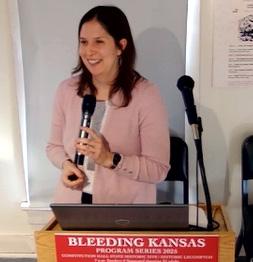
Laura
Brenda Kipp
by the Kansas Historical Society 6425 SW 6th Avenue Topeka KS 66615-1099
Please send change of address information to the above address, email zephyr@ks.gov, or call 785-272-8681, ext. 263.
Partial funding provided by the National Park Service, Department of the Interior. The contents and opinions do not necessarily reflect the views or policies of the Department of the Interior, nor does the mention of trade names or commercial products constitute an endorsement or recommendation by the Department of the Interior. This program receives federal funds from the National Park Service. Regulations of the U.S. Department of the Interior strictly prohibit unlawful discrimination in departmental federally assisted programs on the basis of race, color, national origin, age, or handicap. Any person who believes he or she has been discriminated against in any program activity or facility operated by a recipient of federal assistance should write to:
Office of Equal Opportunity, National Park Service 1849 C Street NW, Washington DC 20240.
©2025
With the mural unveiling in mind and as part of my research for these two presentations, I gained an even greater appreciation for the role women have played in the preservation of our state’s early historic properties, which led to the creation of our Kansas State Historic Sites program. Kansas acquired the first of these sites in 1901, thanks to the efforts of a remarkable and determined woman, Elizabeth Johnson. We haven’t given Elizabeth proper credit, and I think she deserves to be called “mother” of the Kansas State Historic Sites. Elizabeth Agamonta (Walsh) Johnson grew up in Brookville, Missouri. After marrying George Johnson, a homesteader in Republic County, Kansas, she learned about the stories of the Pawnee Nation and Zebulon Pike’s expedition to the region. Accounts said he convinced the Pawnee Nation to lower the Spanish flag and raise the U.S. flag for the first time in Kansas on September 29, 1806. Elizabeth decided to locate the remains of the Pawnee village Pike reportedly visited by scrutinizing his journals. She and George purchased 160 acres containing a large Pawnee village in 1875 to save it from cultivation. Convinced it matched Pike’s description, Elizabeth deeded 11 acres to the state in 1899 with the condition that the land be fenced and a suitable marker installed. The
legislature accepted the property in
Front cover image: Governor Laura Kelly hands the signed proclamation designating April as Kansas Archeology Month to KSHS Executive Director Patrick Zollner as State Archeologist Nikki Klarmann looks on. Photo provided courtesy of Andrea Etzel.



1901, appropriated $3,000 for a fence and monument, and placed the property under KSHS’s administration. Her devotion went deeper than just researching the history of the land; she coordinated two impressive and wellattended public events in 1901. The cornerstone was laid on July 4. The governor, national and state leaders, and hundreds of others witnessed the marker’s unveiling on September 30 (a day after the anniversary because of the Sabbath). Although the site was eventually determined not to have been the Pawnee village that Pike visited (see the Jan/Feb 2008 issue of Kansas Preservation for more details: bit.ly/ kspres30_1), it was still the best-preserved Pawnee village site in Kansas, if not the country. KSHS eventually acted on the opportunity to interpret history and conducted numerous excavations at the site in 1965-1966,
culminating in a unique museum being constructed over the remains of one earthlodge.
While space doesn’t permit the full list here, it’s worth noting that John Brown Museum State Historic Site in Osawatomie was initiated by the Women’s Relief Corps; Shawnee Indian Mission benefitted from the Society of Colonial Dames of Kansas, Daughters of the American Revolution, Daughters of 1812, and Daughters of American Colonists; and Grinter Place was helped by the Junior League of Kansas City. These and other women’s organizations have made a significant impact in preserving and honoring our Kansas history, and we hope that further research is devoted to documenting their efforts.
We sadly note the passing of several former longtime employees at the Kansas State Historic Sites. Richard Gould, curator at Pawnee Indian Museum in Republic for 28 years, passed away October 8, 2024. Ken Wilk, who served as site administrator at Red Rocks in Emporia for 10 years and partnered with KSHS on the Lewis and Clark Bicentennial Commission, passed away February 1, 2025. Bob Wilhelm, curator at Fort Hays in Hays for 29 years, passed away February 20, 2025.
We are also sad to have lost two individuals who had served on KSHS-affiliated boards. Lance Foster, Tribal Historic Preservation Officer for the Iowa Tribe of Kansas and Nebraska, worked closely with our archeologists on the Kansas Unmarked Burial Sites Preservation Board from 2017 until his death on January 12, 2025. Jim Hoy, a fixture of Kansas history for more than 30 years and president of the Kansas Historical Foundation from 1999-2000, passed away February 23, 2025. A special memoriam about Hoy will be published in an upcoming issue of Kansas History: A Journal of the Central Plains
We are grateful for these five individuals’ dedication to preserving and interpreting Kansas history and offer our condolences to their loved ones and colleagues.

Patrick Zollner EXECUTIVE DIRECTOR, STATE HISTORIC PRESERVATION OFFICER
By Bobbie Athon, MS, Director of Communications
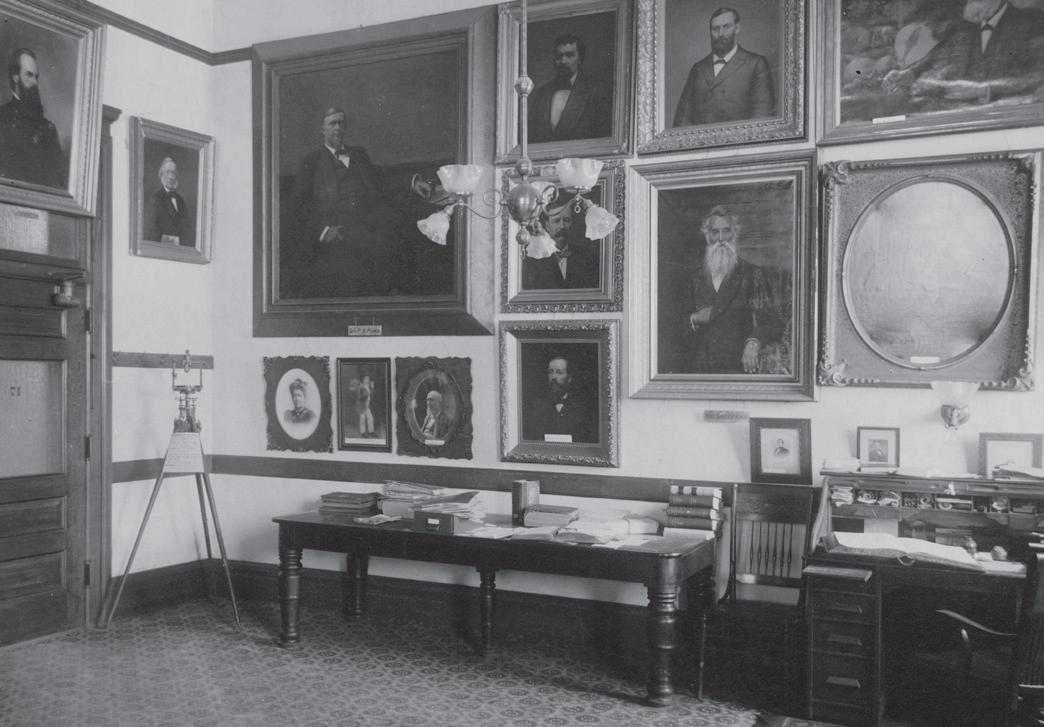

After Secretary Franklin Adams died in 1899, Secretary George Martin renewed efforts to expand the Kansas Historical Society’s quarters to house its ever-growing collections. Secretary Martin’s office on the fifth floor, south wing, displayed the portrait collection.
A settlement of nearly $523,000 from the federal government to cover Civil War state bonds in 1909 provided the solution for the Society’s space concerns. President William Howard Taft joined Secretary Martin in laying a cornerstone for a new veterans memorial in 1911.

Secretary Martin died in 1914 and Secretary William Connelley continued negotiations on the Society’s new home. The Grand Army of the Republic would share the new Memorial Hall, which honored Union veterans. The space would provide a home for the battle flags they had collected. Thousands of veterans came to Topeka to transfer the flags on Dedication Day, May 27, 1914.

The dedication drew about 25,000 people with parades, concerts, a flyover, and an encampment.



Funding did not include office furnishings or moving expenses for the Historical Society. Thomas Sneed, standing at the front of his wagon, worked at the Capitol and took on the job, moving 440,000 objects from the fifth floor to Memorial Hall’s fourth floor. Sneed’s team made 30 to 40 trips between June 27 and August 29, 1914. The grueling schedule proved fatal to his horse. Pictured from the back row, left to right, are J.N. Harrison, move supervisor; Secretary William E. Connelly; Maggie Johnson, the building’s first caretaker; John Menace with his hand on the truck; and General Price at the end of the wagon.
New collections continued to arrive, including embroidered wheat sacks. Originally filled with wheat from a Coffey County mill, this bag was among those sent to Belgians starving during the German embargo in World War I. These expressions of gratitude were donated to the museum collection in 1916.

The larger space in Memorial Hall provided new options for the public like the newspaper reading room and demonstration of traditional skills.
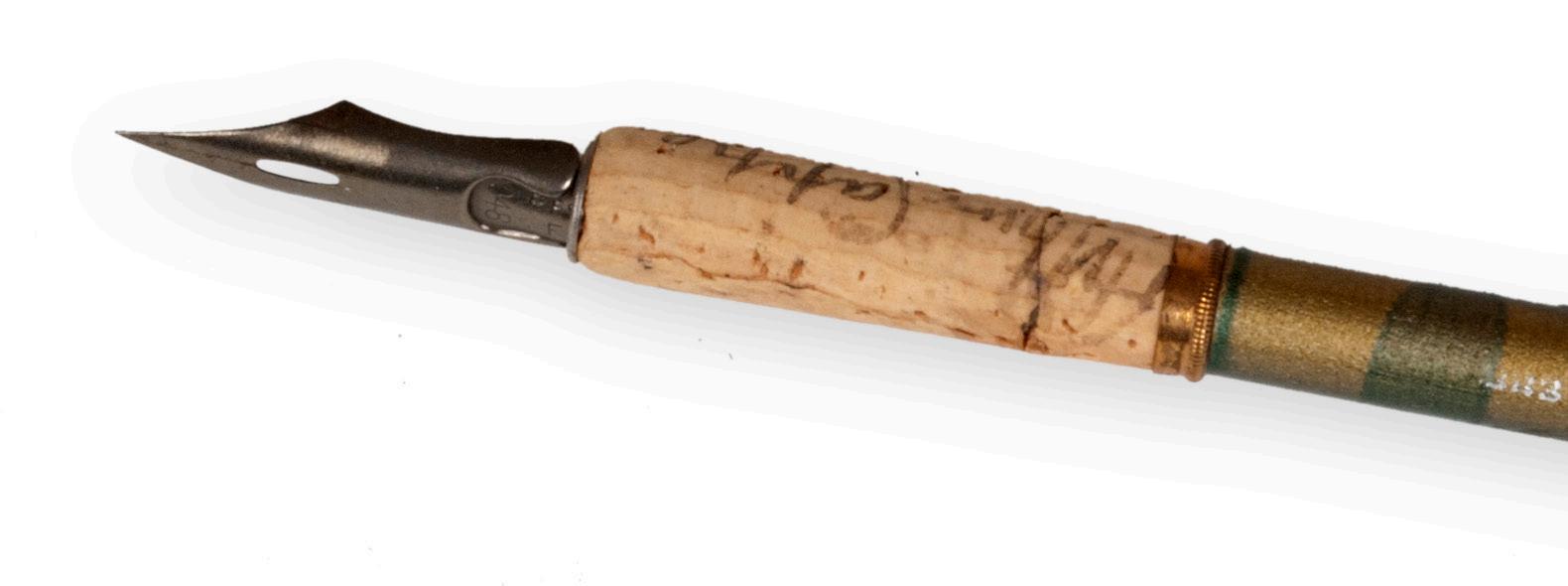
Kansans generally supported the Bone Dry Law in 1917, which banned possession of alcohol by individuals in the state, addressing gaps in earlier legislation. After Governor Arthur Capper signed the bill with this pen, he presented it to Lillian Mitchner, president of the Kansas Woman’s Temperance Union, who donated it to the Historical Society in 1920.
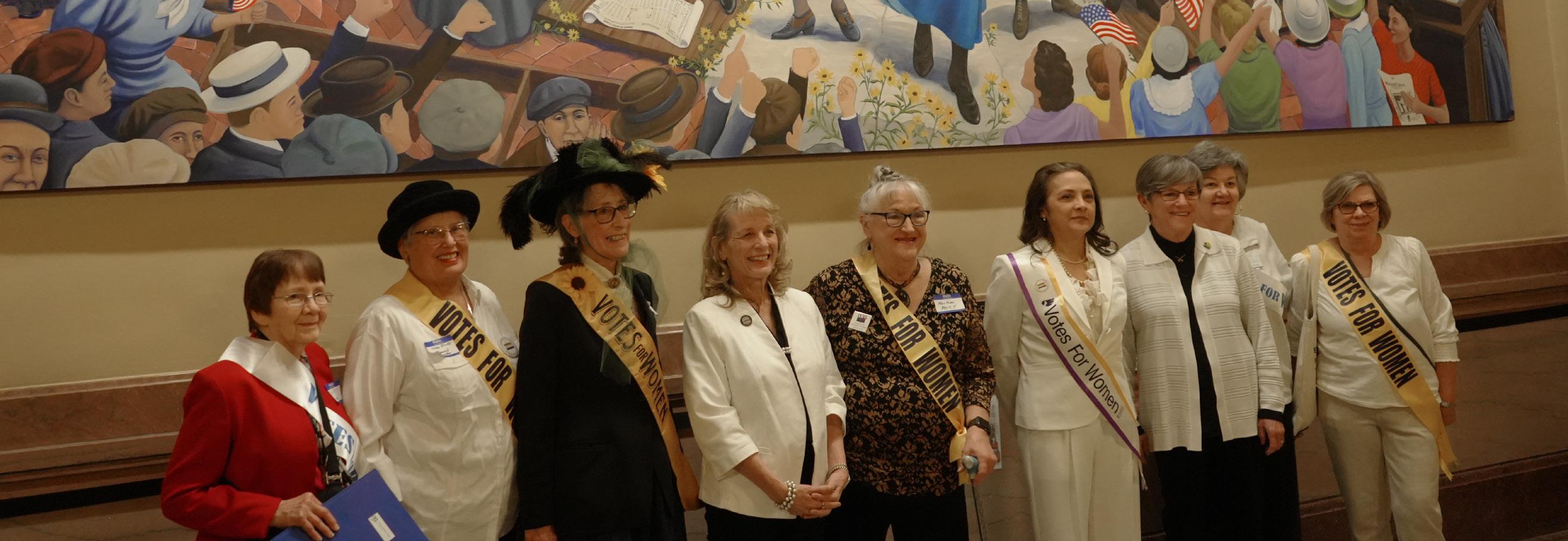


The unveiling of the Rebel Women mural on Kansas Day, January 29, 2025, was the culmination of years of effort by the League of Women Voters of Kansas. The League had initially proposed a mural to honor Kansas’ women suffragists to the Capitol Preservation Committee. After the idea was endorsed, Senator Elaine Bowers (fourth from left) wrote the legislation, which passed with complete support. The League raised private funds for its creation, and selected Phyllis Garibay-Coon (fourth from right) among 25 applicants to serve as the artist. Her painting features 13 influential women in Kansas’ yearslong effort to pass full suffrage, which was finally achieved in 1912. To learn more about the women featured, visit bit.ly/ kshsrebelwomen or view page four of the November/December 2024 issue of Zephyr. The special dedication, cohosted by the Kansas Suffragist Memorial Committee, included a welcome from Senator Bowers and acknowledgements from committee co-chairs Marlene Merrill (fifth from left) and Cille King (far left). Governor Kelly provided special remarks, noting that Kansas could not proudly claim Susanna Salter as the first woman mayor in the U.S. or two all-female city councils in 1878 if some of the courageous women depicted in the mural had not demanded better for themselves and future generations. Artist GaribayCoon also delivered a moving speech, crediting her rebellious parents—a Mexico-born mother who stressed the importance of voting and education, and recently-deceased father who relinquished his land inheritance for an interracial marriage–for her painting being featured in the Capitol with the great works of John Steuart Curry. After the unveiling, the hundreds packed in the first-floor rotunda took turns witnessing the energy and passion conveyed in the mural and the impressively-decorated Kansas Day cake donated by Dillons.
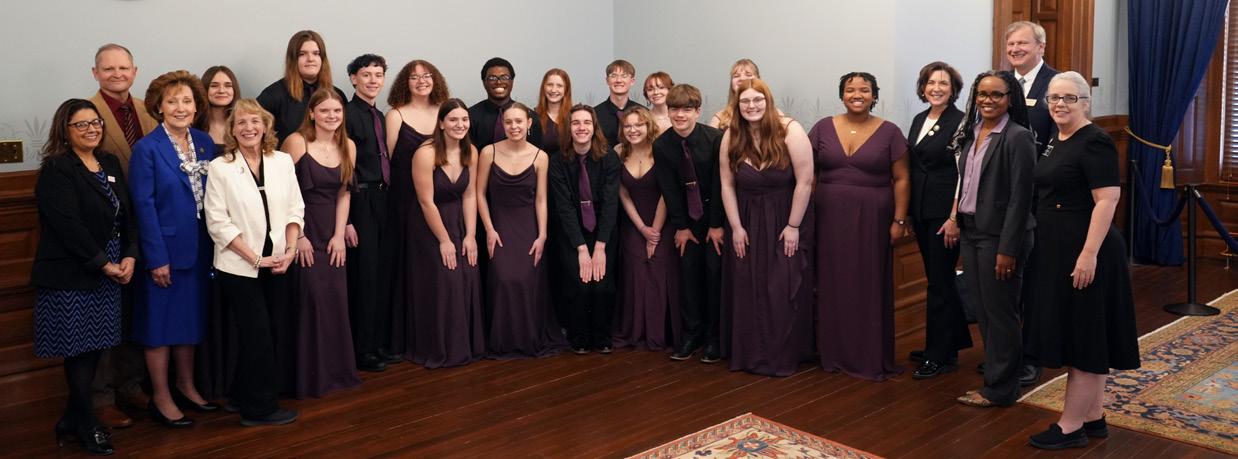


Kansas 250 Press Conference: After the unveiling, the Kansas 250 Commission hosted a press conference in room 212-A North to promote events planned in celebration of America 250. This included a call for courthouses to join the Capitol in displaying two lights on April 18, 2025, on the anniversary of Paul Revere’s famous ride, as part of the nationwide Two Lights for Tomorrow initiative. The event concluded with a special performance from the Topeka West High School choir directed by Andy Huff. In the top center image, KSHS Executive Director Patrick Zollner is depicted at the back right with seven other commission members and the choir.
“Happy Birthday, Kansas!” Celebration: Members of KSHS’s education team traveled across town to the Kansas Children’s Discovery Center to help host a special afternoon of Kansas Daythemed activities. The top left photo shows children participating in the Kansas state symbols dance, with Education Coordinator Ashley Pheigaru portraying a Cottonwood tree and Assistant Director of Education and Outreach Trae Johnson strumming the guitar.
Edventure Program: KSHS joined other organizations to host the fourth annual Kansas Day Edventure program, a free virtual field trip organized by Wichita Public Schools. 2025 was the most successful year yet, generating 10,180 unique live views. Of the four live sessions hosted by our education and state archives teams, the Kansas State Symbols program (top right) was the most popular. Other KSHSled programs explored items made by Kansans, history through documents, and the life of John Brown.
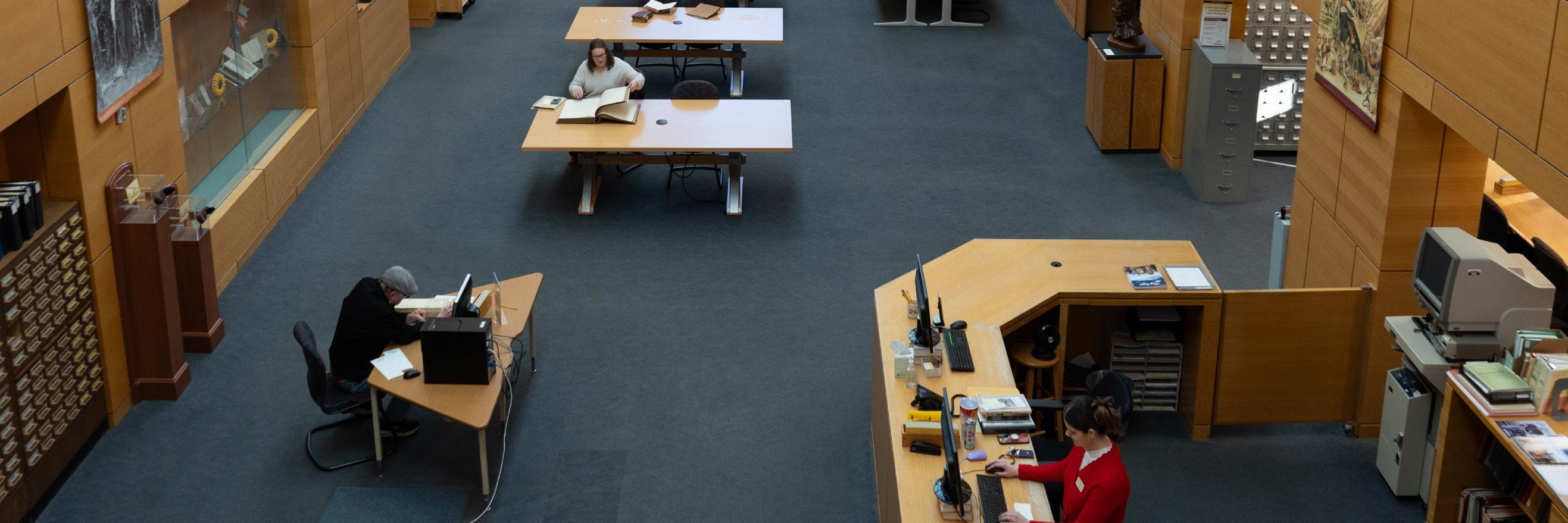
The Kansas Historical Foundation honors and encourages individual achievement in Kansas history through several awards and grants. Apply for these by April 15, 2025.
ALFRED M. LANDON HISTORICAL RESEARCH GRANT
$1,000 award for academic research using KSHS collections
The recipient will be selected in the summer and expected to spend a minimum of two weeks conducting research at KSHS between July 1, 2025, and June 30, 2026.
EDWARD N. TIHEN HISTORICAL RESEARCH GRANT
$500 award for non-academic research using KSHS collections
The recipient will be selected in the spring and expected to conduct research at KSHS between July 1, 2025, and June 30, 2026. Supplemental research at other Kansas historical societies and libraries will also be supported.
EDWARD N. TIHEN HISTORICAL PUBLICATION AWARD
$500 award for first-time writers on Kansas history topics
The recipient will be selected in the summer and expected to spend a minimum of two weeks conducting research at KSHS between July 1, 2025, and June 30, 2026.
Find more details and download the application forms at bit.ly/khf2025awards. Please direct Foundation award and grant questions to Operations Manager Mallorie Mendoza: mallorie.mendoza@ks.gov; 785-272-8681, ext. 209.

Merle & Ruby
Chaney
Trusts
Olathe
We are incredibly grateful for the unwavering support of our Capitol Campaign. The foundations and individuals that comprise the Cornerstone Club have made a significant difference and solidified their role as pillars of philanthropy within our community. Because of their commitment, we are well on our way to preserving and enhancing our cherished history for generations to come. PILLAR
The Foundation launched the Friends of Kansas History membership program in January 2025 to celebrate the reopening of the Kansas Museum of History in Topeka planned for later this year. This new program will unpderpin the Museum for All initiative, allowing visitors to explore the museum’s renovated main galleries and the Kansas State Historic Sites free of charge. By joining, individuals can help fund this initiative while receiving year-round benefits. Memberships are available at various levels, with a 20 percent discount for students, teachers, librarians, and State of Kansas employees with valid ID. Visit bit.ly/khfjoin to sign up or renew your membership!
OF KANSAS HISTORY MEMBERSHIP LEVELS
A 10 percent discount at ●
Kansas Historical Foundation retail locations, including the state historic sites and museum store online
Quarterly subscription to
Kansas History: A Journal of the Central Plains
Bimonthly subscription
to the Zephyr newsletter
Invitation to attend and
participate in the annual meeting, held the first Friday in November
Benefits at museums
and historical sites nationwide through the Time Travelers reciprocal program
Priority status and
discounts on select Kansas Historical Foundation tours
Recognition in the
Zephyr newsletter
Invitation to donor
recognition lunch
Two friend-level gift
memberships to recipients of choice
Recognition on the
kansashistory.gov website
Private behind the scenes
tour for up to 12 people, during the museum’s regular operating hours

Protecting and understanding the archeological resources of Kansas— working with local, state, and tribal entities, offering educational programming, and conducting and sharing research.
Dr. Nikki Klarmann, PhD, State Archeologist
This year marks the 50th anniversary of the Kansas Archeology Training Program (KATP) field school, a partnership between the Kansas Historical Society (KSHS) and the Kansas Anthropological Association (KAA). Since its founding in 1955, KAA has worked to unite professionals and amateurs interested in learning more about Kansas history. KSHS and KAA started hosting short weekend excavations in 1966, with events held once or twice annually. Eight years later at the insistence of KAA President R.D. Brent and his successor Harold Reed, State Archeologist Thomas (Tom) Witty agreed to partner with KAA in offering a longer, two-week excavation experience to the public. The first official KATP field school was held in 1975 at two archeological sites at Historic Lake Scott State Park in Scott County. Since then, the field school has visited 34 counties, excavated 49 sites, and conducted countless archeological surveys to record and revisit sites across Kansas. Participants have also helped wash, sort, and catalog collections from countless sites in the archeology laboratory over these five decades.
“
We look
forward to continuing our partnership with KAA and celebrating the 50th anniversary of KATP this summer at the Mount Aeolia Ruins in Douglas, our 35th county.
–Dr. Nikki Klarmann, State Archeologist
To learn more and register for this year’s field school, visit bit.ly/KATP2025
1960

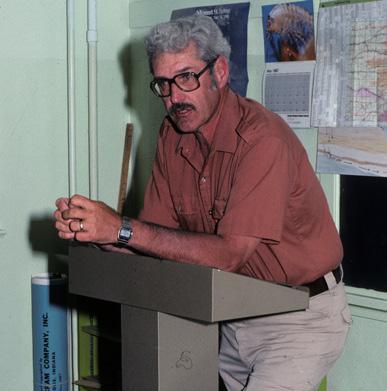
Tom Witty becomes state archeologist of Kansas
Public outreach and work with avocational archeologists were not part of my original training. That changed when I was hired at KSHS in 1990, joined KAA, and began participating in KATP. In my years as an employee, I saw that the agency’s partnership with KAA, and specifically KATP, allowed for archeological research to be conducted that otherwise would not have been possible. Now that I’m retired and serving as KAA president, I also recognize that our volunteers, many of whom have long since become my friends, make up an effective statewide constituency for Kansas archeology. That the good work of KATP has continued for 50 years is most impressive, and I look forward to participating in its continued operation in the years to come.
–Dr. Tim Weston, president, Kansas Anthropological Association
Association is founded Initial KAA logo 1975
Tom Witty speaks to participants of the 1982 field school

Inaugural KATP field school in Scott County
Excavations begin near the El Quartelejo Pueblo Ruins
1985
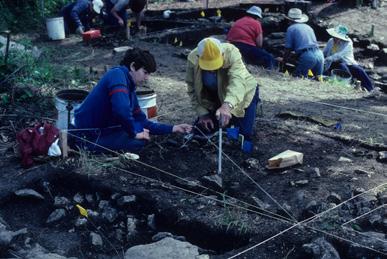
10th anniversary in Franklin County
Participants measure the depth of excavations at the Jotham Meeker Farmstead

Governor Laura Kelly signed a proclamation recognizing April as Archeology Month! In celebration, Project and Outreach Archeologist Paige Bump is hosting programs across Kansas to generate interest in the field and broaden understanding of artifacts! Attend an upcoming event nearby to discover answers to these questions and more:
– What are artifacts and why are they important?
– What types of artifacts are commonly found in my area?
– What should I do if I come across a prehistoric or historic item?
– Would this object be considered an artifact? Can you date it, explain its origin, and describe its use?
Prehistoric and historic artifacts will be identified on a first-come, first-served basis. A maximum of five to 10 items will be examined per household. No appraisals will be made.
6–9 p.m. Thursday, April 3 – Dealership Building in Council Grove This event is hosted in collaboration with Kaw Mission State Historic Site and made possible thanks to the Friends of Kaw Heritage.
1-5 p.m. Saturday, April 5 – Constitution Hall State Historic Site in Lecompton
1-5 p.m. Saturday, April 19 – Pawnee Indian Museum State Historic Site near Republic
7-9 p.m. Wednesday, April 23 – Kinsley Public Library in Kinsley
4-6 p.m. Thursday, April 24 – Stevens County Library in Hugoton
11 a.m. - 1 p.m., Friday, April 25 – Ashland City Library in Ashland
4-6 p.m. Friday, April 25 – Fowler Public Library in Fowler
1-5 p.m. Saturday, April 26 | Fort Hays State Historic Site in Hays
2-4 p.m. Sunday, April 27 – El Quartelejo Museum in Scott City
7-9 p.m. Monday, April 28 – Barton County Historical Society in Great Bend
To learn more about archeology artifact identification, visit bit.ly/kshsarchid. Please direct related questions to Paige Bump: paige.bump@ks.gov; 785-272-8681, ext. 267.

20th anniversary in Osage County
Participants

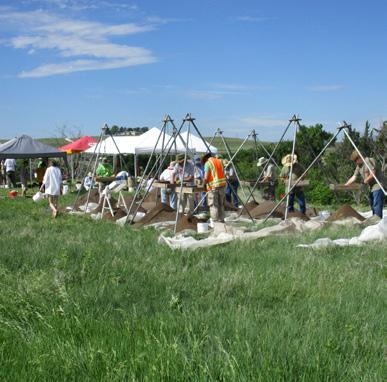

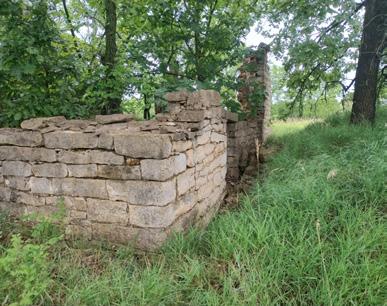
Participants clean artifacts collected at sites associated with the Kanorado Locality
in Ellis County
Participants screen soils excavated from the Krause site
KATP takes a twoyear hiatus due to the COVID-19 pandemic
Graphic shared by the Kansas Department of Health and Environment during the height of the pandemic
50th anniversary and the first in Douglas County
Mount Aeolia Ruins, where the mansion of Frederick P. Stanton was constructed, will serve as the 2025 field school site. Image courtesy of Angelo Ruiz.

Preserving and protecting the state’s historic buildings, structures, and sites through financial assistance programs, technical guidance, and regulations; working with federal, state, and local communities and partners to interpret and preserve these resources.
Jamee Fiore Krivenko, MHP, National Register Coordinator
The governor-appointed Kansas Historic Sites Board of Review evaluates the historical significance of buildings, structures, objects, and sites nominated for the Register of Historic Kansas Places. The 11 appointees meet several times throughout the year to consider nominations, determining which properties to list in the state register and recommend for the National Register of Historic Places. The board also awards preservation planning and rehabilitation grants.
Dr. Jay Price, chair—architectural historian (2009-2012, 2020-present): Director of the Local and Community History Program at Wichita State University, where he’s worked since 1999.
Jean Schodorf—governor designee (2020-present): Served as a state senator for three terms from 2001 to 2013. Employs her passion for history by operating the Little House on the Prairie Museum in Independence.
Patrick Zollner—SHPO (2004-present): Named executive director of KSHS in 2023 after serving as the agency’s Cultural Resources Division director for 17 years. He first worked closely with the board as the liaison, then as secretary, now as a member.
Mark Kelly—historic archeology (2020-present): A professional archeologist, attorney, and historian. He has written several articles and books on federal Indigenous law, treaty construction, and the fur trade.
Dr. Laura Murphy—prehistoric archeology (2017-2020, 2023-present): Associate professor and acting chair of Washburn University’s Sociology and Anthropology Department. Researches Great Plains archeology, geoarcheology, and paleoenvironmental reconstruction.
Dana Williamson—architect (2020-present): A licensed architect and the owner of Williamson Architecture in Dodge City. She serves on the Kansas Preservation Alliance, American Institute of Architects’ Kansas Board of Directors, and Historic Landmark Commission for Dodge City.
Dr. Kerry Wynn—historian (2021-present): Washburn University professor and Honors Program director. Her research focuses on women and gender history and Indigenous history.
Whitley Stephens—public member (2021-present): Licensed architect at Populous in Kansas City with an enthusiasm for history. She supports young professionals by serving on the National Council of Architectural Registration Boards’ Scholars in Professional Practice Advisory Group.
Ryan McDonald—public member: A fifth-generation Kansan originally from Mullinville with a background in construction science. As a Council Grove business owner and property developer, he has a deep appreciation for historic places, including those he owns.
Sarah Holder—public member (2024-present): A preservationist who focuses on bringing history together with modern technology. She is interested in the relationships between old and new buildings.
Dr. Mary McMurray—public member (2020-present): Director of the Johnson County Museum with a passion for Kansas history and historic places. She previously served as the superintendent of historic sites and outdoor education for Jackson County Parks and Recreation.
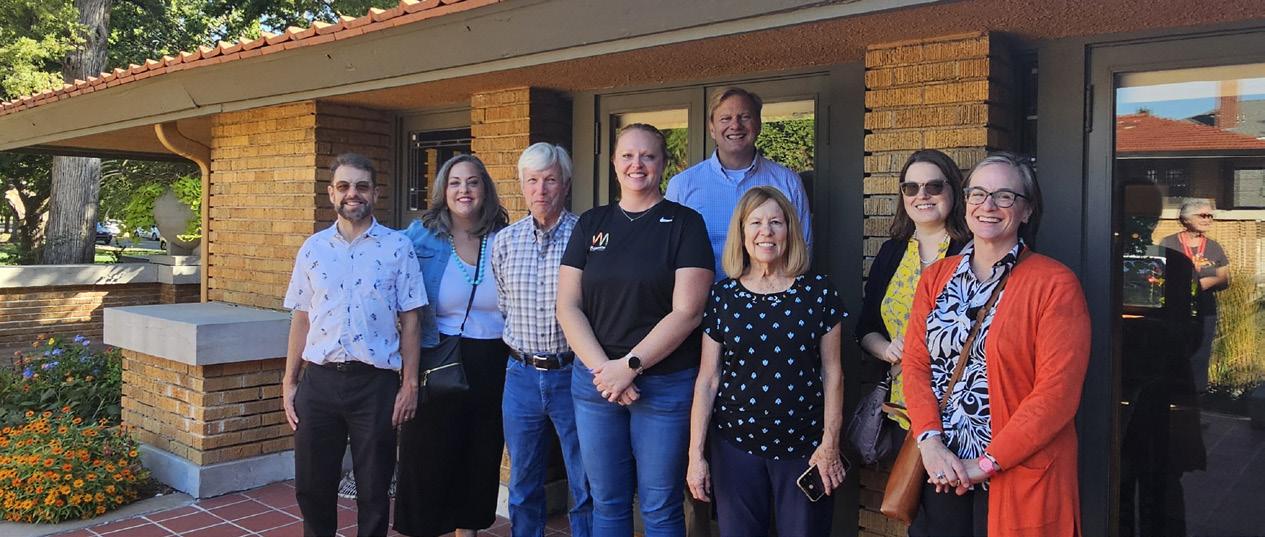

Bottom: The October 5 board meeting also included an opportunity to peek inside the Corbin Education Center at Wichita State University, which was listed in the Register of Historic Kansas Places in June 2024.
Bethany Falvey, MFA, Subgrants Manager
The Kansas Preservation Conference is returning this spring, inviting preservationists, historians, architects, and enthusiasts to Topeka on May 7-9, 2025. This year’s theme is Planning for the Future of Preservation, emphasizing the importance of trades, resiliency planning, and engaging the next generation of preservationists. The Kansas State Historic Preservation Office in partnership with the City of Topeka, Kansas Main Street, and the Kansas Preservation Alliance (KPA) look forward to connecting and learning with people from across the state.
Hosting the conference in Topeka provides convenient opportunities to explore the capital city’s rich history. From the grandeur of the Kansas State Capitol to the cultural significance of the Brown v. Board of Education sites, Topeka is a living testament to the importance of preservation. Conference sessions and events will be held across the city, with chances to explore several buildings listed in the National Register of Historic Places. Venues include The Beacon (formerly the Topeka Woman’s Club building), Kansas Historical Society, and Kansas State Capitol.
The conference will kick off on Wednesday with workshops geared toward Certified Local Governments and Main Street communities while still offering beneficial resources for all. Capitol dome tours will be available throughout the afternoon to take in the elaborate architecture of the Kansas State Capitol and a unique perspective of Topeka. Wednesday evening’s opening reception will allow attendees to casually visit with hosts and peers before the main sessions begin.
Thursday’s full schedule of programs at The Beacon will include presentations on the state of preservation in Kansas, the National Alliance of Preservation Commissions’ Messaging Guide, and cutting-edge technology. Keynote speaker Andrew Gustafson (pictured bottom right), curator of interpretation for the Johnson County Museum, will discuss the museum’s 2022 special exhibit, Redlined: Cities, Suburbs, and Segregation, exploring how this discriminatory practice shaped urban development and scarred neighborhoods across Kansas and the nation. Thursday evening’s special event will feature Ethan and Elizabeth Finkelstein (pictured top right), founders of the social media phenomenon Cheap Old Houses, which has prompted a new generation to embrace the charm and potential of historic properties. This talk will be free and open to the public so property holders, aspiring homeowners, and admirers of historic architecture can benefit from the inspiration and insights shared.
A preservation advocacy panel will be held Friday, featuring Russ Carnahan, president of Preservation Action and former U.S. Representative from Missouri. The day will also include sessions on exciting yet practical preservation topics and the

KPA annual awards ceremony luncheon. KPA is a statewide, not-for-profit organization dedicated to supporting the preservation of Kansas heritage through education, advocacy, cooperation with like-minded individuals and groups, and participation in the preservation of historic structures and locations. In recognizing that Kansas’ heritage is one of its greatest assets—a source of pride and irreplaceable resource for the future—the KPA will present awards for outstanding preservation projects across the state.
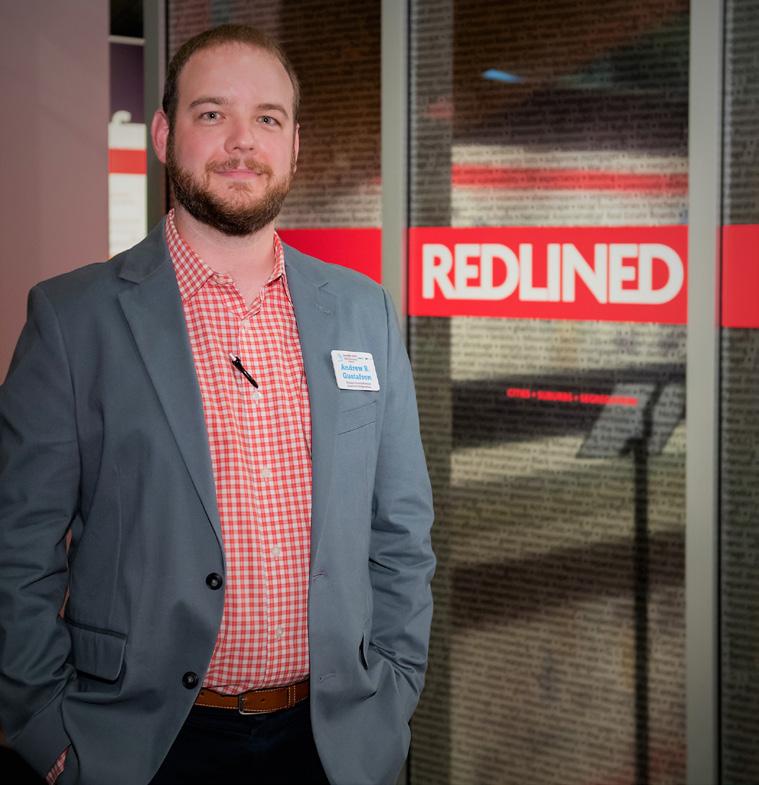
The Kansas Preservation Conference is more than an educational event; it’s a space for collaboration and networking.
Whether over coffee during morning sessions or at the evening reception, attendees can connect with others passionate about protecting Kansas’ unique heritage. The conference will foster a sense of community beyond its twoand-a-half-day program, providing seasoned professionals and those new to the world of preservation with opportunities to learn, connect, and be inspired in our capital city.
Plan today to join us in Topeka this May! Register for the conference at bit.ly/reg2025kpc. Watch for updates on the KSHPO Facebook page and at bit.ly/KSHPOevents

Using stories from Kansas history to encourage new explorations of the past, understand our present, and appreciate the experiences of others; collecting, preserving, and providing access to the state’s material culture.
Progress continues with the Kansas Museum of History’s renovation of the permanent exhibit gallery as we prepare to reopen in November 2025. Museum staff members are working hard to facilitate construction and life safety updates, edit and review exhibit labels, and clean and prepare artifacts for display. A lot of changes are happening in a short time, a few of which are highlighted below:
Construction Update
Our newest update is the construction of walls in the gallery. This important step in the renovation process is bringing the exhibit designs and layouts we have viewed on a computer screen to reality. The walls, along with a new feature that will elevate the visitor experience, will provide the foundation and backdrop for the artifacts and stories we will display. After the walls are built, new sprinklers will be installed, along with track lighting and new flooring.
The museum’s lobby is also getting a makeover. While we were sad to say goodbye to the Discovery Place, we are excited to introduce the Learning Lab, a new classroom and multi-use space that will provide opportunities for hands-on learning and presentations. Other updates in the lobby include moving the museum store back to its original location and the addition of a café area. A new welcome desk will be located near the museum entrance, along with another new feature that will soon be revealed! (Hint: it is large and yellow.)
Train Platform Update
Speaking of makeovers, the platform behind the train has never looked better! After the meticulous work of sanding and refinishing the pine flooring and oak handrails, the platform really shines.
Another update on the platform is the removal of the old cases. Exhibits will be returning to this space along with some updated lighting. Visitors will also get the opportunity to enter both train cars, with updated experiences related to train travel in the 1880s.
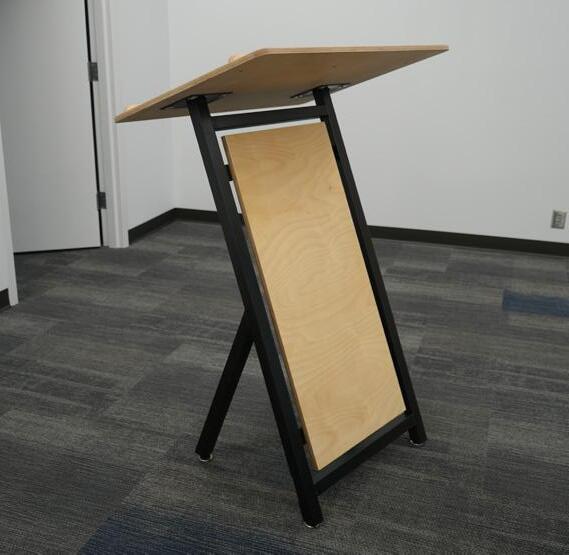

Writing an exhibit label involves numerous steps and takes a lot of time. It is important to ensure each label that goes into the gallery is accurately researched and well-written. Of course, the other important factor is word count. Common practice keeps exhibit labels to less than 150 words, with many even shorter. This can be a difficult task, especially when explaining complex topics.
This flow chart gives a sense of the steps required to write one label, as we work with Dimensional Innovations to produce the exhibits. Take this infographic and multiply it by around 500 and we get our finished gallery!
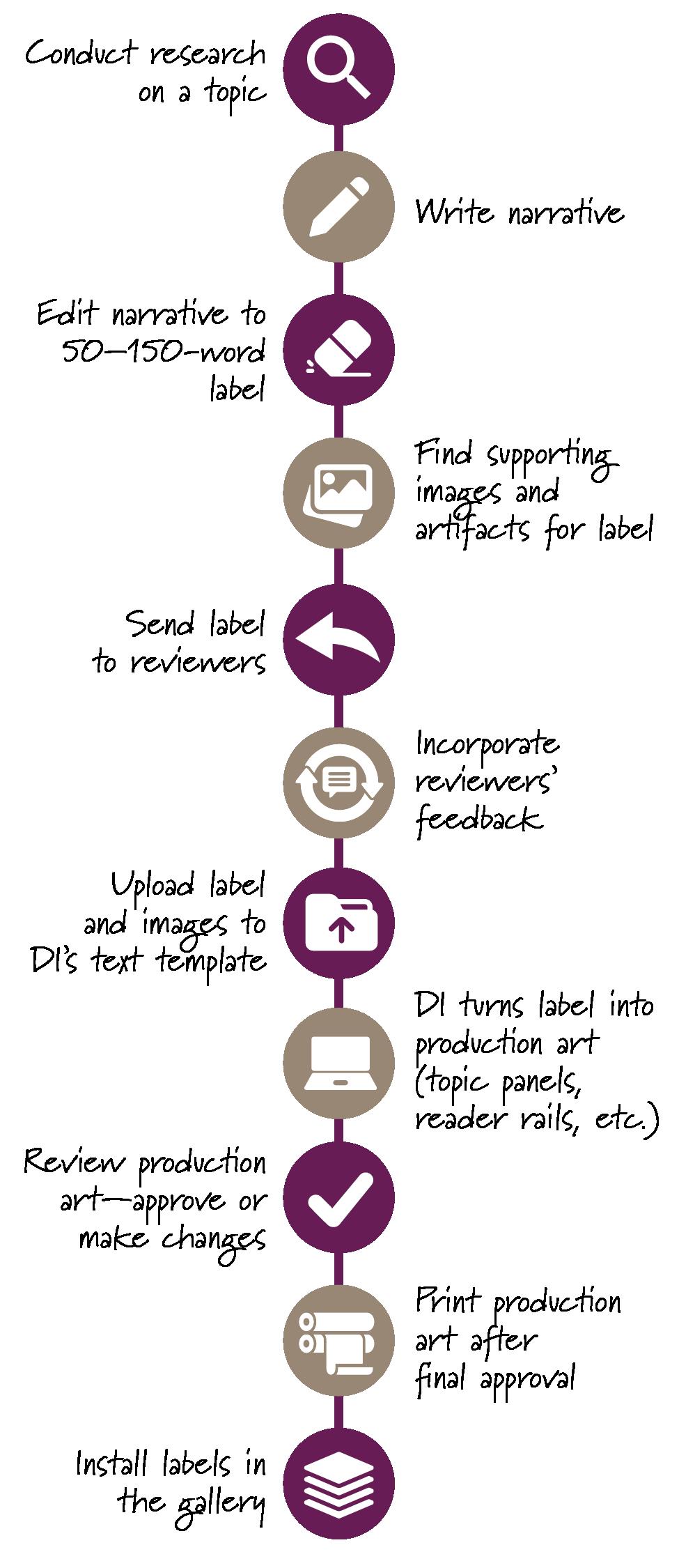

Staff members had the honor of interviewing acclaimed filmmaker Kevin Willmott about his work and how his years in Kansas have impacted his filmmaking career and activism. Part of Willmott’s interview will be included in the new gallery, along with remarks from Kirk Sharp, executive director of the Gordon Parks Museum in Fort Scott, about how Kansas shaped Parks’ work. These interviews will be part of our civil rights section, showing how filmmakers and artists use their art to push for social change.
In addition to being interviewed, Willmott donated several artifacts to the museum related to his films. One of these is a 10-foot-tall robot named Strom from his 2013 film, Destination Planet Negro. This robot will have a special place in the gallery, in yet another new feature we are including with the renovation.
“ I think what you guys have done here at the museum is really, really important…
Kansas is probably one of the best places to learn your history because it has such a rich, deep history of freedom, and everybody needs freedom.”
—Kevin Willmott
Strom the Robot is currently renting space in our registration office but can’t wait to be on display when the museum reopens.
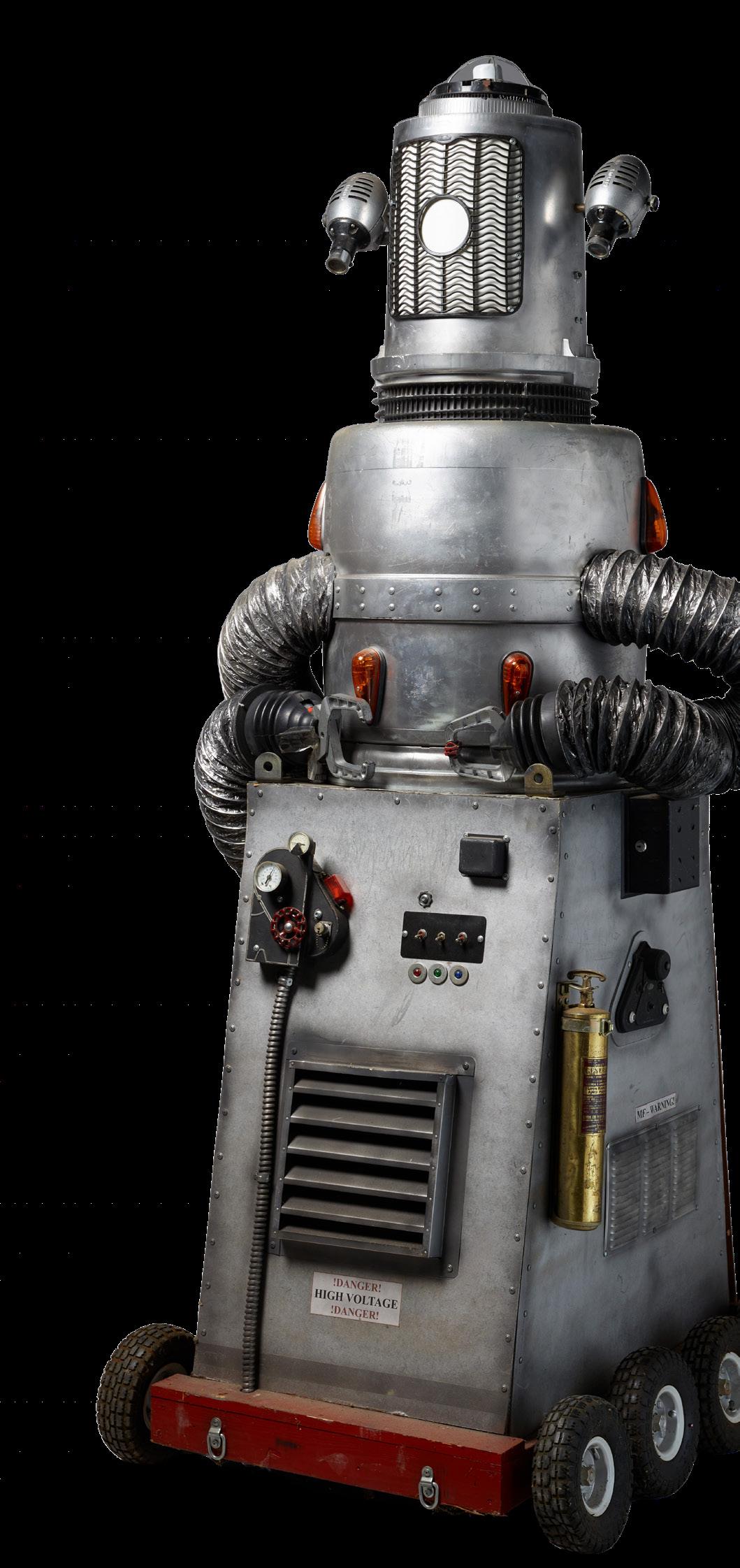

In celebration of the Kansas Historical Society’s (KSHS) 150th anniversary, the 2025 Museum After Hours programs are highlighting the growth of our agency and our staff members’ continuous efforts to preserve Kansas history. The series kicked off on March 12, 2025 (pictured above), with KSHS Executive Director Patrick Zollner reflecting on the organization’s intricate past and interviewing Ramon Powers, executive director from 1988-2002, about his experiences and research on the agency’s early leaders. The April 9 program was led by State Archeologist Nikki Klarmann and featured former staff members Dr. Robert Hoard, Virginia Wulfkuhle, and Tim Weston. Those who missed the initial programs can view the recordings here: bit.ly/kshsmahplaylist. Join us for the next five sessions—held on the second Wednesday of each month through September—as we continue examining our core collections, programs, and sites and announce the details of a new special exhibit.
May 14 – State Historic Preservation Office
Led by Cultural Resources Division Director and Deputy State Historic Preservation Officer Katrina Ringler; featuring former staff members Terry Marmet and Vance Kelley
June 11 – State Historic Sites
Led by Executive Director Patrick Zollner
July 9 – State Archives
Led by State Archives Division Director Michael Church
August 13 – Special Exhibit: Celebrating KANSAS!
Led by Kansas Tourism’s KANSAS! Magazine
Manager Andrea Etzel
September 10 – Museum & Education
Led by Museum & Education Division Director
Sarah Bell
To reach as many Kansas history enthusiasts as possible, this year’s series will be offered in a hybrid format, with options to view the programs on Zoom, livestream them on the KSHS YouTube channel, or register to attend at the Historical Society in Topeka. In-person attendees can enjoy a behind-the-scenes tour at 5:40 or 6 p.m.; a different space will be
featured each month and tickets can be purchased for $5 at the door. Light refreshments can be enjoyed before the free presentation begins at 6:30 p.m. in the State Archives research room. To ensure a comfortable viewing experience, those interested in attending in person must register through an online link, which will be posted with a complete description at bit.ly/kshsmah
As the programs near, additional details and the registration links will also be provided in the KSHS monthly enewsletter (bit.ly/kshseupdates) and posted on the Kansas Museum of History’s Facebook and Instagram (@ksmuseumhistory). Any unresolved questions can be addressed with series organizer Ashley Pheigaru: ashley. pheigaru@ks.gov; 785-272-8681, ext. 416.
With opening day behind us and spring in full swing, it’s the perfect time to check out the first two episodes of the new “Baseball in Kansas” series on the Kansas Historical Society Education YouTube channel. Developed by Peyton Williams, a KSHS volunteer and European professional basketball player during her 2024 off-season, these videos dive into the early evolution of baseball in Kansas, emphasizing how the sport united communities across the state. Grab some peanuts or crackerjacks and put this video on-deck at bit.ly/kshsedubaseball
This silver baseball trophy was awarded to the Kaw Valley baseball club of Lawrence during the third annual Kansas State Fair tournament held in 1867 in Lawrence.

Collecting, preserving, and providing access to the state’s history through unpublished materials, personal papers, audio-visual materials, and government, organization, and business records.
Ben Epps, Photographer

As the collections photographer for the Kansas Historical Society, I was asked to assess the east building attic of Shawnee Indian Mission State Historic Site in Fairway for a photodocumentation project.
Constructed in 1840, the east building provided classrooms and living quarters for the mission’s male students. Going into the project I knew I would be documenting graffiti on the walls for a few days, as proposed, but upon inspection it became clear that a much more in-depth chronicling would be needed to properly show the state of the walls.
The graffiti on the walls and slanted ceiling of the attic dates from the mid-1800s to 2022. The markings are so dense they could not be adequately portrayed in a simple series of photographs. My experience with archival photography of maps and panoramic photos helped me determine the best approach would be to capture overlapping sections of the walls and “stitch” the images together with editing software. With the invaluable help of Imaging Technician Jennifer Thompson, we set out to photograph the two vertical walls and two slanted ceilings of lath and plaster on the roof’s rafters to create four 110-foot sections.
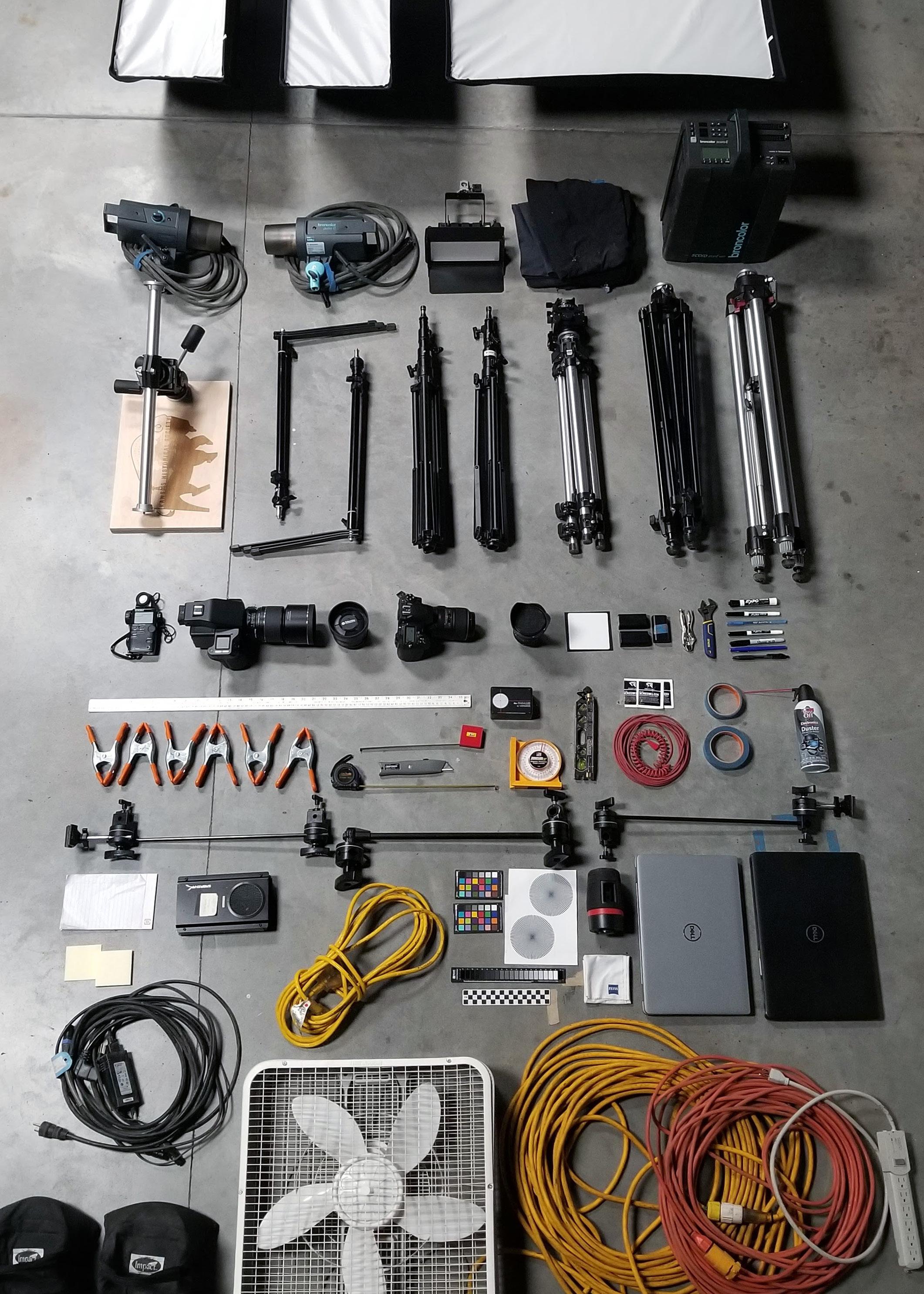
“
Photographing the attic of this historic mission posed significant challenges. In order to photograph sections and stitch them together, the camera needed to be aligned with the subject matter. In a studio tools like mirrors or a laser light can help align the camera’s sensor with the focal point. These alignment tools would not have had the same effect in the attic due to the uneven walls and floors, so we had to make our best attempts without them.”

Ductwork in the air handling system proved to be a hurdle, at times obstructing the camera placement or blocking the view of the wall. This was especially the case at the south end where space was limited. The slanted ceilings, or lath and plaster on rafters, also presented challenges. Unlike the unobstructed vertical sections that could be captured from 10 feet in single overlapping shots, the slanted ceilings had to be photographed closer, requiring two or three overlapping images for the same surface area. Since tilting the camera to photograph the slanted walls would have caused distortion (a type commonly known as keystone effect), we set up a tripod system low to the floor, which allowed the camera to slide into position and maintain alignment.
The vertical walls required us to reposition the camera every 26 inches, providing 40 percent overlap between images. While that seemed small at the beginning of the project, it felt like a luxury near the end when we were repositioning the camera every 10 inches, narrowly avoiding pipes and conduit in tight spaces. When these photos are processed to create the panoramic image, the overlap will allow the software to properly align key visual elements into a seamless image.
While we were successful in imaging the graffiti onsite, this 28-day process of steadily shifting from one space to another often involved us tackling easier sections until we devised plans to work in the more complicated areas.
“As the days progressed, we were continually problem-solving, which made the work taxing yet exciting.”
This imaging project is especially important since the attic is not accessible to the public. We were able to depict segments at one-to-one scale, which will preserve the smallest inscriptions digitally. Our role was to provide accurate documentation, not description or explanation. Once the graffiti images are fully processed, they will be available for deeper examination, research, and interpretation.
By Teresa Coble, MLS, Acquisitions Archivist

Richland State Bank was founded in Richland, Shawnee County, in 1892 by Albert Neese, the father of former U.S. Treasurer Georgia Neese Clark Gray, and his brother Frank Neese. The bank was chartered in 1917. Georgia started working there as an assistant cashier in 1935 and became bank president in 1937 following her father’s death. She later served as United States Treasurer under President Harry Truman from 19491953 and returned to the bank at the end of his administration. With planning underway to construct the Clinton Reservoir where Richland and other small towns like Belvoir, Bloomington, and Sigil lay, Georgia moved the bank to Topeka in 1964. Renamed Capital City State Bank, her friend and mentor, Harry Truman, helped dedicate the new location. Capital City Bank (as it was renamed in 1993) continued operations until it was purchased by Capital Federal Financial Inc. in 2018.
The Richland State Bank collection contains ledgers, minute books, payroll records, correspondence, and bylaws. It also includes a scrapbook of the Capital City State Bank dedication in Topeka featuring Georgia Neese Clark Gray and President Harry Truman.
To view this collection, please visit the State Archives research room in Topeka and request reference unit ID 527688. Learn more about Georgia Neese Clark Gray by listening to the Kansas Public Radio commentary featured in our “Tune In” section on page 19.

Preserving and protecting the state historic sites placed under the care of the Historical Society; educating visitors and classes through exhibits, exterior interpretation, and programming.

Designated a National Historic Landmark in 1968, Shawnee Indian Mission played a fundamental role as the story of Kansas unfolded. The site’s broad significance is tied with Indigenous history, the conflict over slavery, and the Civil War.
The Shawnee Tribe and many other eastern Indigenous peoples were forcibly moved to present-day Kansas beginning in the 1830s. Missouri Shawnee leader Chief Fish requested a missionary in 1830, and the Reverend Thomas Johnson was appointed. Shawnee Methodist Mission opened as a one-room school the following year near Chouteau’s Trading Post in Wyandotte County. With accommodations only for the Shawnee and Delaware peoples, the Reverend Johnson proposed a larger school to serve many Indigenous children. The current site, positioned along the Santa Fe, Oregon, and California trails in presentday Fairway (Johnson County), was selected for the new school that opened in 1839. Among the students learning basic academics, manual arts, and agriculture were children of the Cherokee Nation, Chippewa Tribe, Delaware Tribe, Gros Ventre Tribe, Kaw Nation, Kickapoo Tribe, Munsee Band, Omaha Tribe, Osage Nation, Otoe-Missouria Tribe, Ottawa Tribe, Peoria Tribe, Potawatomi Nation, Shawnee Tribe, Wea Tribe, and Wyandot Nation. This was the largest mission in the area, with 16 buildings on 2,000 acres, and an enrollment of nearly 200 boys and girls aged five to 23. Neither this location nor the previous one-room building had forced federally-mandated enrollment.
The mission transitioned from a manual training school to a day school in 1854, when Kansas Territory was established. Andrew Reeder, the first appointed territorial governor, had offices in the mission’s north building. The first territorial legislature met in the mission’s east building in 1855, passing “bogus laws” to uphold slavery in Kansas, so-called because fraudulent voting had elected the legislators. Abolitionists later worked to dismiss these laws.
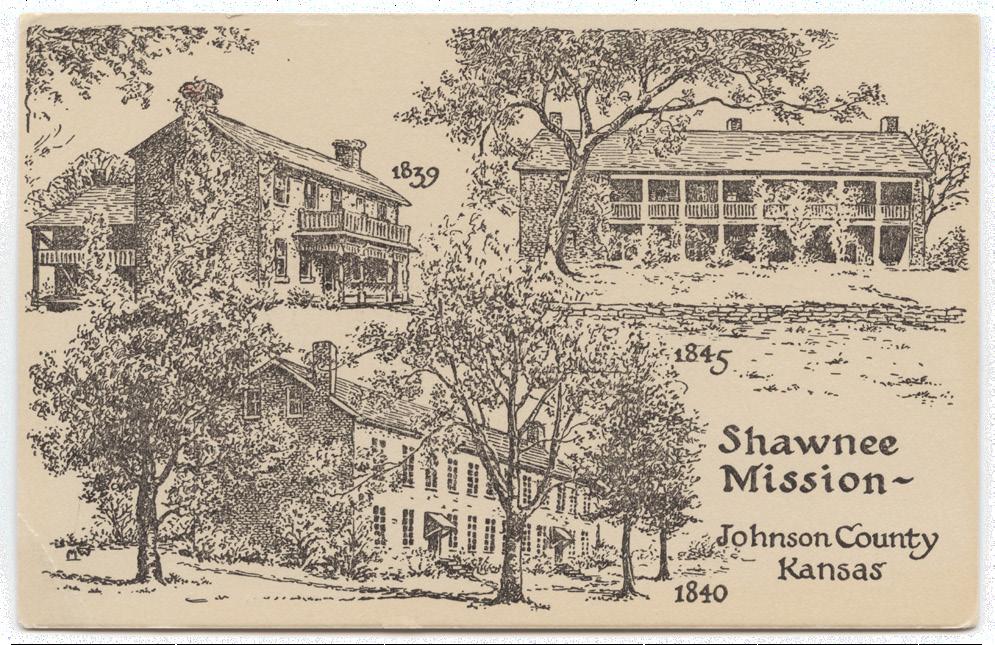
The Reverend Johnson’s oldest son, Alexander, ran the mission from 1858 until it closed in 1862. With the Civil War in full force and tensions escalating along the Kansas-Missouri border, the mission became an encampment for Union soldiers. The troops stationed there helped defeat Price’s Confederate army at the nearby battles of the Big Blue and Westport.
Following the Civil War, the mission remained in private property until acquired by the State of Kansas in 1927. The Historical Society has since preserved the three remaining brick buildings to the highest of preservation standards, and continues to fulfill major maintenance needs. Meanwhile, the City of Fairway diligently oversees its operations with financial support from the Shawnee Indian Mission Foundation, based on a partnership agreement in 2016. Thanks to the efforts and resources of this dedicated stewardship team, visitors can explore the 12-acre property and view exhibits in the north and east buildings year-round.

Shawnee Indian Mission State Historic Site 3403 W 53rd St, Fairway, KS 66205
Visit: 10 a.m. – 5 p.m. Wednesday – Saturday, Open year-round | Admission is free!

Jennifer Laughlin was hired as the site director of Shawnee Indian Mission State Historic Site when the partnership was formed in fall 2016. A native of Kansas City, Jennifer earned undergraduate degrees in education and art history from the University of Kansas and a master’s in museum studies from the University of Nebraska. She served as curator of the Wyandotte County Museum for nearly 12 years before she began her role at the mission. Jennifer enjoys connecting visitors of all ages with powerful local history and loves seeing eyes widen with curiosity when sharing the stories of the mission. She relies on two decades of experience in museum administration, collection management, and community programming for her varied duties and the site’s busy year-round schedule. Jennifer and her dedicated volunteers are currently preparing for the annual field trip season, with students from 14 schools visiting in April and May to learn about one of the most significant sites in Kansas.
Featuring documentaries, YouTube videos, podcasts, and other audiovisual offerings that highlight engaging stories related to Kansas history.
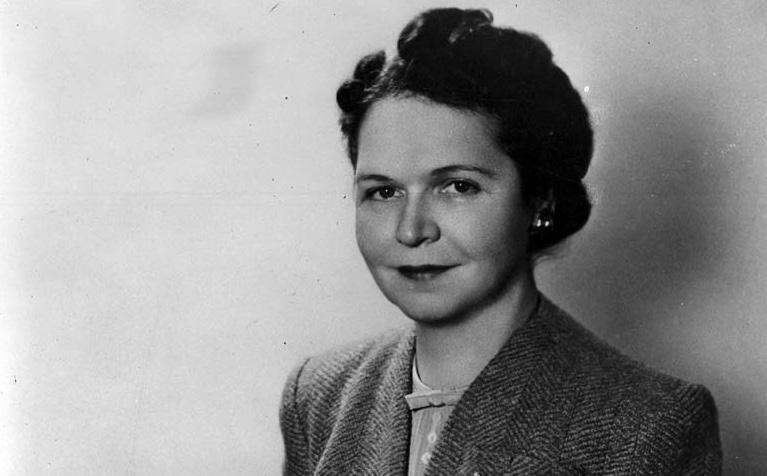

Shawnee Indian Mission provides a comprehensive programming schedule, which includes the Western Academy series—featuring presentations from local experts on various facets of the mission’s history—and Beyond the Classroom Experiences—immersive activities that bring history, culture, and storytelling to life. Hosted for more than three decades, the annual fall festival is the mission’s largest event of the year, in which many experience the site’s rich history for the first time and hundreds return for the powerful reenactments, living history performances, historic games, and artist and food vendors. To stay advised of the latest news and events from the Shawnee Indian Mission, subscribe to the foundation’s enewsletter at bit.ly/subscribesimfdn or gather details from shawneeindianmission. org/events.
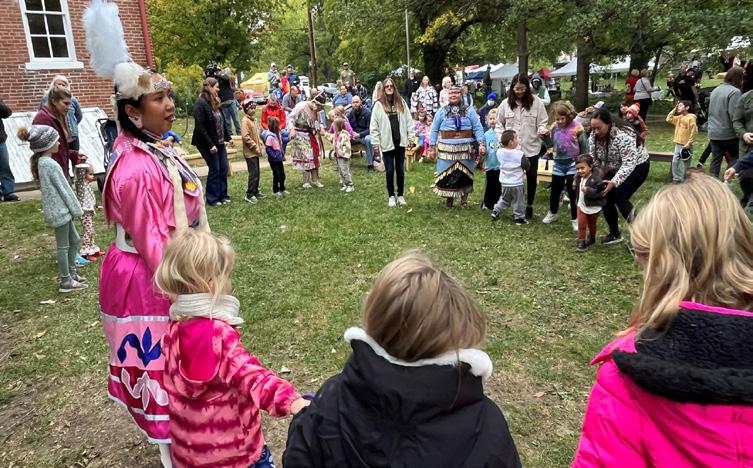
Culture
Spring is often a time for controlled burning. “Flint Hills Fire Culture: A Legacy of Caring for the Tallgrass Prairie” is a 27-minute video that explains the necessity of this practice. Produced by Great Plains Fire Science Exchange, this program uses interviews with farmers, ranchers, agronomists, and fire and law enforcement officials to explain how prescribed fire has traditionally helped with land management and benefitted the ecosystem, allowing the state and local economies to thrive. Take this opportunity to learn about the rich history of fire culture from Kansas Secretary of Agriculture Mike Beam, Bryan Obermeyer of The Nature Conservancy, and members of the Kaw and Kiowa Nations at bit.ly/inpire402
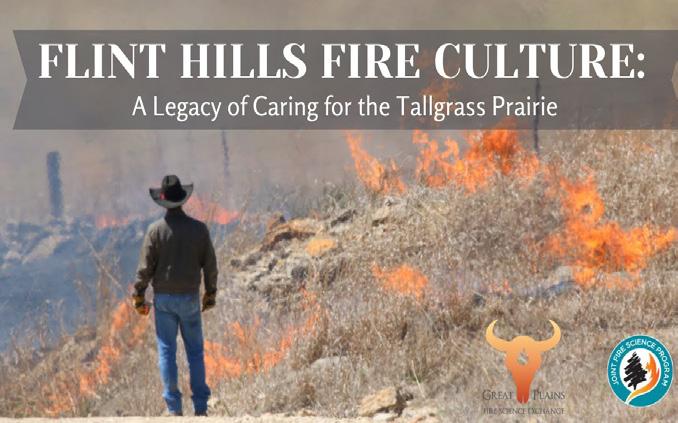
An aspiring actress turned banker, Georgia Neese Clark Gray was the first woman to serve as United States Treasurer. In this 4-minute audio recording from Kansas Public Radio, commentator Katie Keckeisen provides a concise biography of Gray’s life, describing her early experiences in Richland, Kansas, her acting endeavors and political involvement, and the responsibilities she undertook at her father’s bank. Gray’s determination to prove herself led to many future successes. Learn about these from Keckeisen, local history librarian for the Topeka & Shawnee County Public Library and former KSHS collections archivist, by visiting bit.ly/kprgray
The Dust Bowl was devastating for Kansans and Midwesterners in the 1930s. Produced by Smoky Hills PBS, “Stories from the Dust Bowl” provides personal experiences from those who lived through this destructive period. Scientists, researchers, and professors recount the conditions that led to the Dust Bowl and efforts preventing it from recurring. Among those featured is Mary Knapp, former Kansas State University climatologist and administrator of First Territorial Capitol State Historic Site in Fort Riley. Funded in part by the Kansas Humanities Council, this video is enhanced with music, film, and imagery, some of which was provided by the Kansas Historical Society. View the 57-minute program at bit.ly/shpbsdustbowl

Margaret Hill McCarter was a teacher and author. McCarter left her home state of Indiana to head the english department at Topeka High School in 1888. She began her writing career in 1901 and became one of the best-known novelists in Kansas. Her work
The Price of the Prairie, published in 1910, told of settlers in post-Civil War Kansas. A Wall of Man, published in 1912, portrayed the struggle between free-state and proslavery factions. On this day in 1908, McCarter began a series of newspaper articles about influential women in Kansas history entitled “A Hundred Kansas Women.” McCarter founded the Topeka women’s club, Western Sorosis, and was elected second vice president of the Kansas Equal Suffrage Association in 1908 and 1909. She became the first woman to speak at a Republican National Convention in 1920 and served as president of the Woman’s Kansas Day Club in 1927. McCarter Elementary School in Topeka is named in her memory. Find more details about this accomplished author and educator from Kansapedia bit.ly/kshskpmccarter.
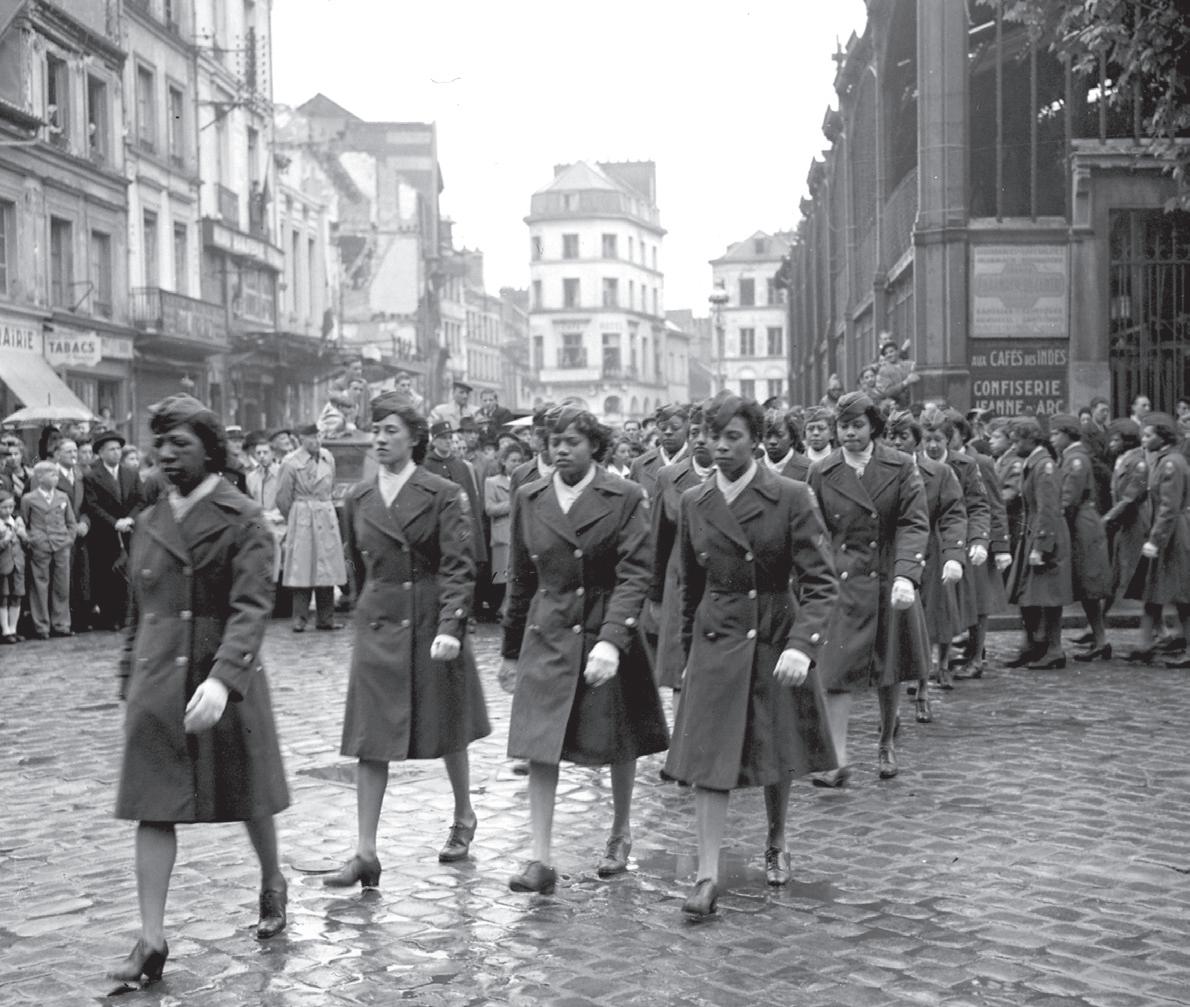

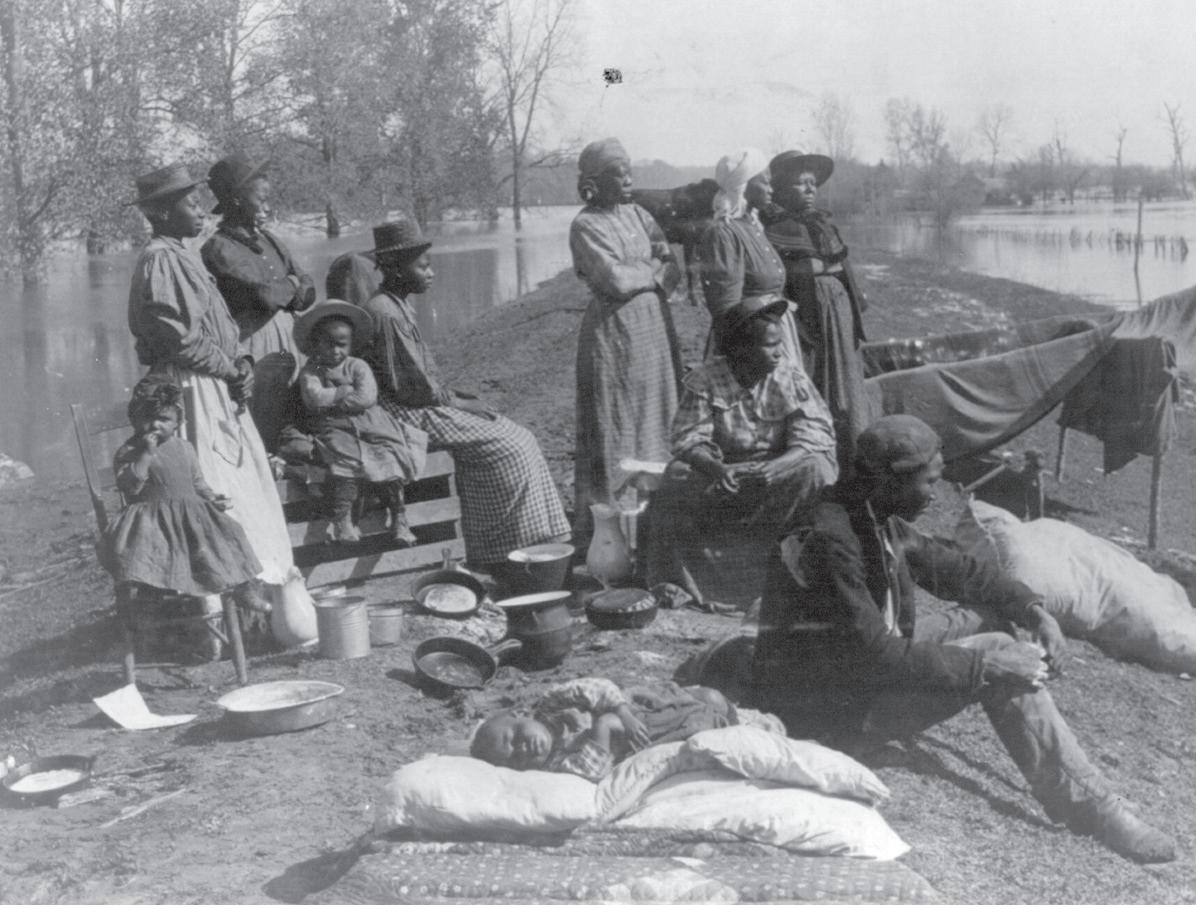
Photo of refugees on levee from April 17, 1897, provided courtesy of the Library of Congress 3–17 3–1 3–26
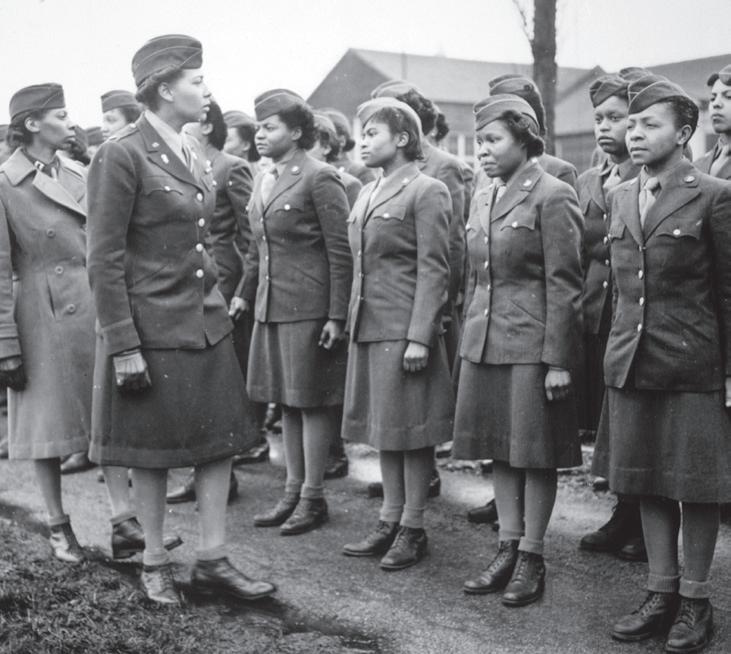
The movie The Six Triple Eight brought to light the extraordinary efforts of the mostly African American 6888th Battalion, U.S. Women’s Army Corps. The 6888th was tasked with clearing the backlog of mail sent to and from servicemen overseas. This battalion worked three shifts, 24 hours a day, in poor conditions to sort approximately 17 million pieces of mail. Given six months to complete this monumental assignment, they finished in 90 days. Fifteen of these women had Kansas connections including Golda Lee Patton from El Dorado. She enlisted with the Women’s Army Corps on this day in 1943, joined the 6888th in August of that year, and eventually rose to the rank of T5 (Technician Fifth Grade). The veterans of the 6888th Battalion were awarded the Congressional Gold Medal in 2018, and a memorial was erected at Fort Leavenworth in their honor. View a list of the women who served in the 6888th by state at bit.ly/6888veterans.
Photos of the 6888th Battalion courtesy of the National Archives
Post Reconstruction “Jim Crow” laws made life unsafe for African Americans in the South. Many chose exodus, turning to the promise of a better life in Kansas. Those who came between 1879 and 1881 are called Exodusters. On this day in 1879, the first 200 Exodusters arrived in Wyandotte County on the steamer Fannie Lewis from Mississippi and Louisiana. An estimated 20,000 Black migrants sought refuge in Kansas. Governor John St. John asked communities across the state to welcome this large influx of people; some accepted his request. Read more about the first Exodusters from Kansapedia (bit.ly/kshskpexodusters) or the Autumn 1960 edition of Kansas Historical Quarterly (bit.ly/kshswyexodusters).

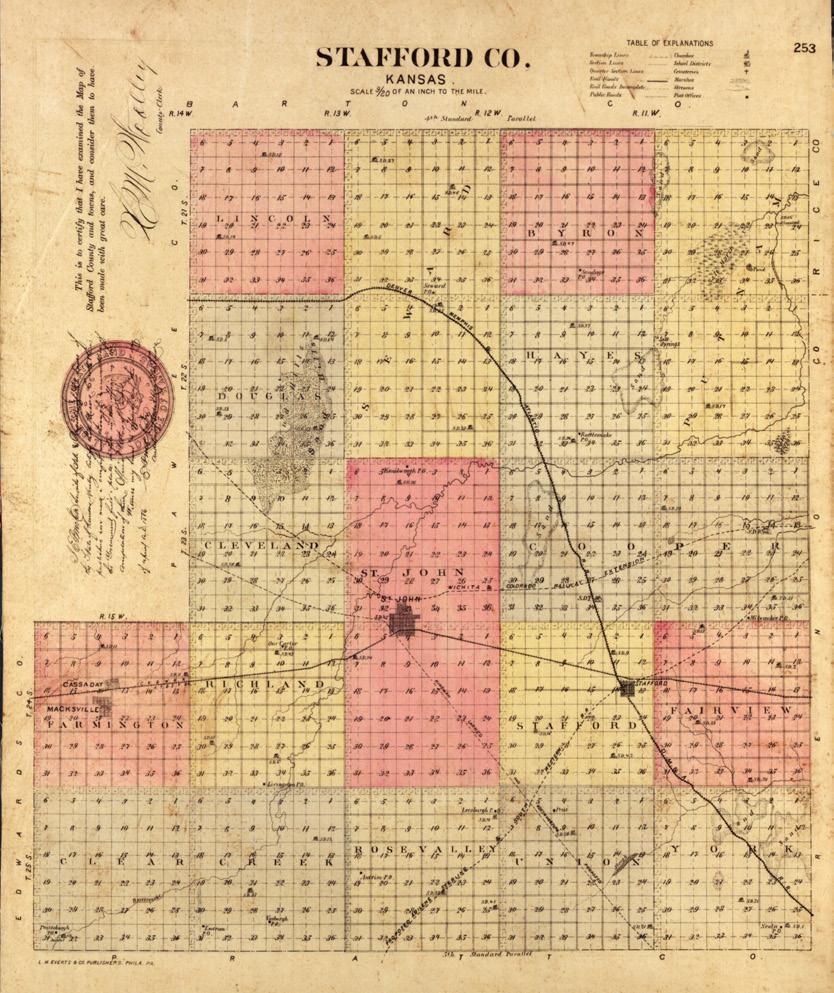
this day in 1882 to determine whether Bedford, Stafford, or St. John would become the county seat. Late in the afternoon before the polls closed, a tornado struck Stafford Township, injuring several people and damaging many homes and businesses. This included the polling site, from which the ballot box was carried a half mile away. The box was recovered, but the ballots were never found. A special election was held on April 14 for the township’s residents to vote again, but even with the addition of these ballots the necessary majority was not reached. Another county election was scheduled for April 18, with St. John claiming the victory. Residents of Stafford believed their town might have won had it not been for the tornado. Discover more about these elections and this museum artifact from Kansapedia (bit.ly/ kshskpstaffordseat) or the Cool Things podcast (bit.ly/kshsballotboxpod).


Fort Dodge was established on this day in 1865 and became an important fort on the western frontier. Its primary role was to keep peace with the Plains Indigenous peoples and safeguard traffic on the Santa Fe Trail. The fort also distributed promised supplies to the people of five Indigenous Nations who often waited for late arrivals. Named for Brigadier General Grenville M. Dodge, the fort is the oldest permanent settlement in southwest Kansas. Its earliest structures were dugouts or made of sod and adobe; wooden buildings were first erected in 1866. Generals Alfred Sully and General George A. Custer were among Fort Dodge’s commanders. The fort was abandoned in 1882 after the Indigenous residents had been moved to Indian Territory. A few of the original structures began serving as a soldier’s home for Kansas veterans in 1889. Find more information about frontier forts from Kansapedia: bit.ly/kshskpfrontierfts Visit Kansas Memory to discover objects archeologists recovered from Fort Dodge, like this medicine bottle: bit.ly/kmftdodgeartifacts

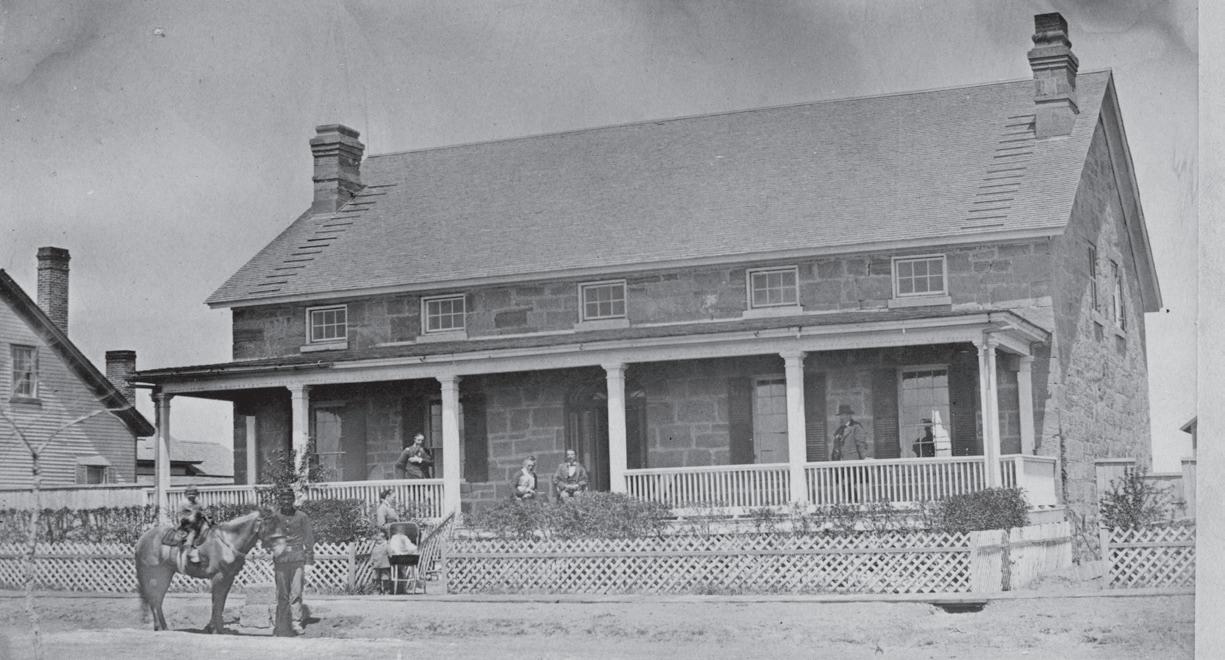
On this day in 1884, four armed men attempted to rob the Medicine Valley Bank in Medicine Lodge. Caldwell’s Marshal Henry Brown (second from left), Assistant Marshal Ben Wheeler (right), and cowhands William Smith (second from right) and John Wesley (left) were the culprits. During the robbery, bank president E.W. Payne reached for his revolver and was shot dead. A hail of bullets followed and George Geppart, a bank employee, was shot. Despite his wounds, he managed to seal the vault before he died. Leaving emptyhanded, the robbers got away but were later captured by a posse and jailed. That night, a mob broke into the jail and the prisoners attempted to escape. Brown, carrying this engraved rifle for his service as marshal, was shot dead. Wheeler was badly wounded; he along with Wesley and Smith were hanged. Learn more about this incident and how the rifle became part of the museum collections from Kansapedia: bit.ly/kshskpwinchester
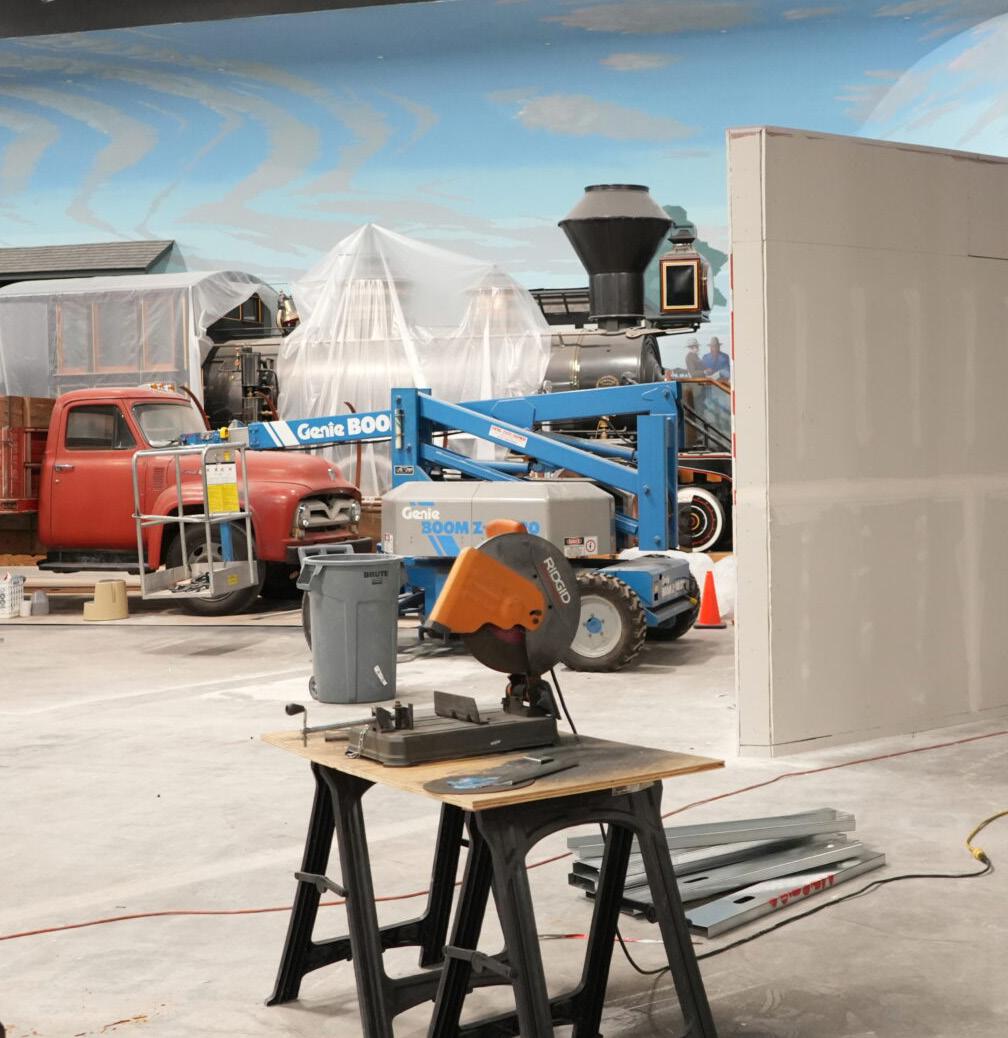
KANSAS REFLECTOR:
MUSEUM ON TRACK TO REOPEN IN THE FALL
An excellent summary of the Kansas Museum of History’s renovation progress was published in Kansas Reflector on February 17, 2025. Written by AJ Dome, the story highlights artifacts that will return to the gallery and features a rendering of the What is Kansas section from our design partner, Dimensional Innovations. The article also mentions other Kansas Historical Society resources and activities, with a special focus on the 2025 archeology field school taking place June 6-15 in Lecompton. Read the overview at bit.ly/ksreflectorkmh0225
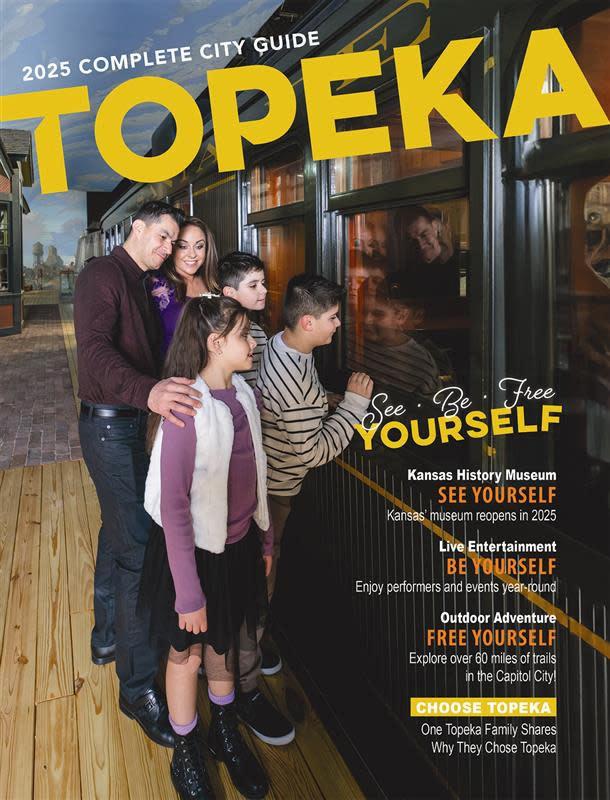
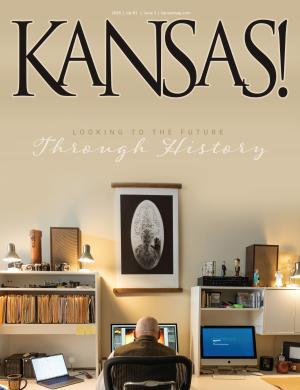
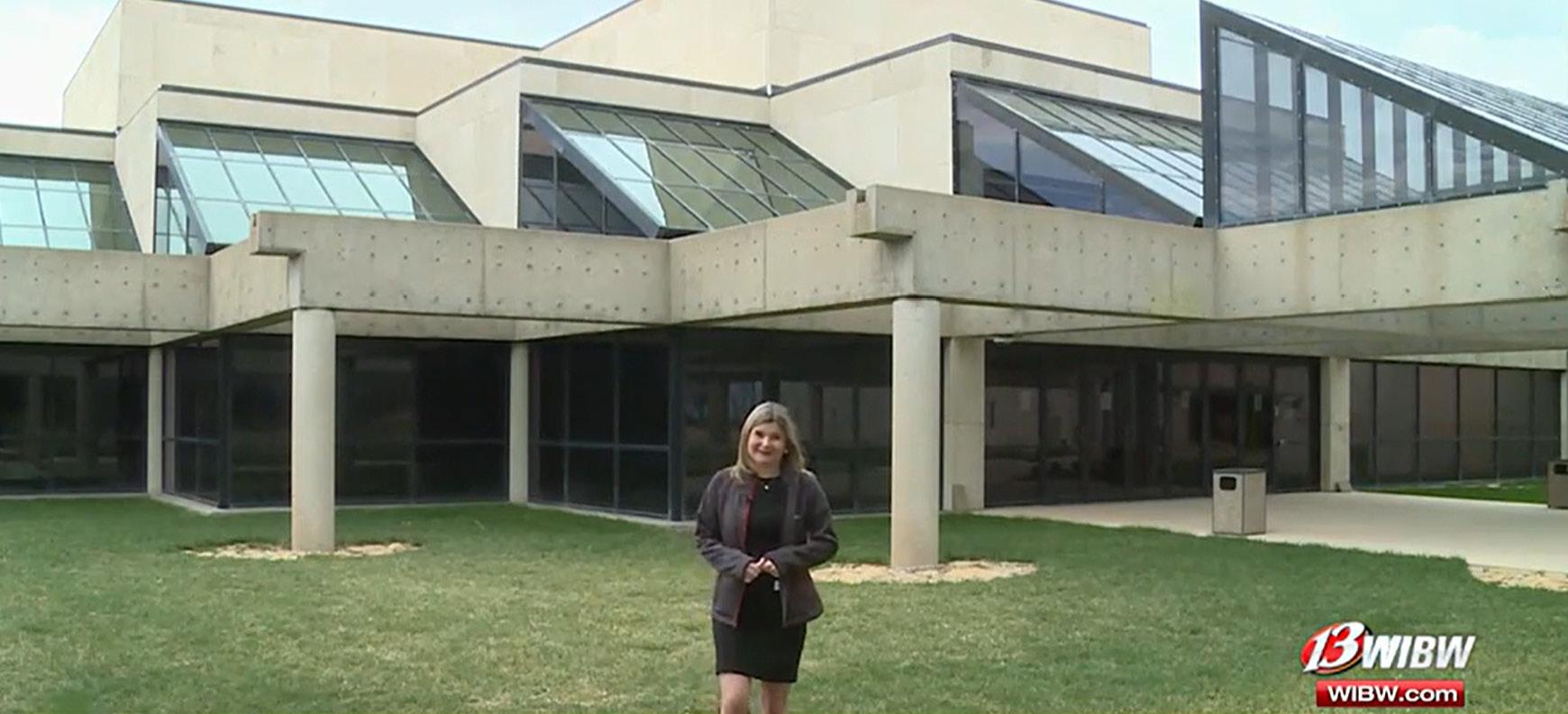
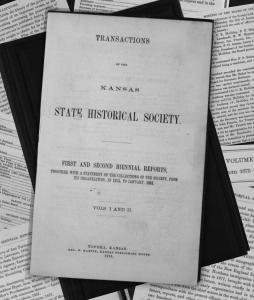
KSHS SOCIAL MEDIA: 150TH ANNIVERSARY ACTIVITIES
Want a complete list of all the activities we’ve planned in honor our 150th anniversary? Check out this pinned post on the Kansas Historical Society’s Facebook (@kansashistorical) or Instagram (@kansashistory) to discover what we’ve unveiled and have in store. There you can also find the first segment of the six-part video series we’re releasing exclusively on our social channels!
2025 TOPEKA CITY GUIDE: SEE | BE | FREE YOURSELF
The Kansas Historical Society is highlighted in the feature story of the 2025 Topeka City Guide. In addition to discovering how individuals can see themselves in the Kansas Museum of History’s new exhibits and learning about things young families can explore in the State Archives research room, readers can find travel and leisure inspiration, browse events taking place across the capital city, and devour stories about their local community. Be sure to check out pages six through nine in the English or Spanish guide by ordering a free printed copy (visittopeka.com/plan/visitors-guide/) or viewing the digital version (issuu.com/topekapartnership).
KANSAS! MAGAZINE:
LOOKING TO THE FUTURE THROUGH HISTORY
KANSAS! Magazine, a publication from Kansas Tourism that’s celebrating 80 years in 2025, expertly weaved Kansas history throughout its February/March issue. A story on the Kansas Historical Society’s 150-year legacy appears on pages 42-47, featuring the writing of Christine Steinkuehler and the photography of Nick Krug. Readers may especially enjoy the timeline showing the evolution of our organization, a map marking the historic sites that have shaped us, and information about our efforts to preserve battle flags. Readers can gain access to the print or digital edition by purchasing a subscription or a single issue. Visit travelks.com/kansasmagazine/ to take this step or learn what else is inside.
WIBW’s Claire Decatur and Eric Ives stopped by the Kansas Museum of History on March 26, 2025, to chat with Museum Director Sarah Bell about the progress that’s been made in the galleries. The segment offered sneak peeks of recent construction, showcasing vividlypainted walls that will set the mood for each exhibit area, highlighting a new feature that visitors will be able to walk through, and featuring a new element that’s being added to the special exhibits gallery. View the progress and surprises at bit.ly/wibwkmh0325.

16 – Statewide First Territorial Capitol, Hollenberg Pony Express Station, Mine Creek Civil War Battlefield, Pawnee Indian Museum, and Red Rock State Historic Sites open for the season, 10 a.m. Wednesday
17 – Studley Cottonwood Ranch State Historic Site opens for the season, 9 a.m. Thursday
17 – Virtual Kansas State Records Board meeting, 1 p.m. Thursday, via Zoom; bit.ly/kshssrb
19 – Republic Ask An Archeologist: Identifying and Preserving Artifacts, presented by Paige Bump, 1 p.m. Saturday, Pawnee Indian Museum State Historic Site
23 – Kansas City Grinter Place State Historic Site opens for the season, 10 a.m. Wednesday
23 – Kinsley Ask An Archeologist: Identifying and Preserving Artifacts, presented by Paige Bump, 7 p.m. Wednesday, Kinsley Public Library
24 – Hugoton Ask An Archeologist: Identifying and Preserving Artifacts, presented by Paige Bump, 4 p.m. Thursday, Stevens County Library
25 – Ashland Ask An Archeologist: Identifying and Preserving Artifacts, presented by Paige Bump, 11 a.m. Friday, Ashland City Library
25 – Fowler Ask An Archeologist: Identifying and Preserving Artifacts, presented by Paige Bump, 4 p.m. Friday, Fowler Public Library
26 – Pleasanton Park Day, 9 a.m. Saturday, Mine Creek Civil War Battlefield State Historic Site
26 – Emporia Red Rocks 20th Anniversary Celebration, 1 p.m. Saturday, Red Rocks State Historic Site
26 – Hays Ask An Archeologist: Identifying and Preserving Artifacts, presented by Paige Bump, 1 p.m. Saturday, Ashland City Library
27 – Scott City Ask An Archeologist: Identifying and Preserving Artifacts, presented by Paige Bump, 2 p.m. Sunday, El Quartelejo Museum
28 – Great Bend Ask An Archeologist: Identifying and Preserving Artifacts, presented by Paige Bump, 7 p.m. Monday, Barton County Historical Society
30 – Online Application deadline for the 2025 Historic Preservation Fund grants, 11:59 p.m. Wednesday; bit.ly/kshshpf
30 – Online Registration closes for the Kansas Preservation Conference, 11:59 p.m. Wednesday; bit.ly/reg2025kpc
2–3 – Morton County Kansas Sampler Foundation’s Big Kansas Road Trip Pop Up, Friday and Saturday, various locations; bigkansasroadtrip.com
3 – Fairway Western Academy Series, “John Brown’s Last Hurrah in Kansas: Battle of the Spurs,” presented by Jim Thornton, 10 a.m. Saturday, Shawnee Indian Mission
3 – Osawatomie John Brown Birthday Celebration, 12 p.m. Saturday, John Brown Memorial Park
4 – Council Grove Kaw Mission Councils, “The Buffalo People of Kansas: Western Expansion, Prairies, and Buffalo,” presented by Gordon Yellowman, 2 p.m. Sunday, The Dealership Building
7–9 – Topeka Kansas Preservation Conference, Wednesday through Friday, The Beacon and other various locations; bit.ly/KSHPOevents
8 – Topeka A Special Evening Event with Social Media Phenomenon Cheap Old Houses, 7 p.m. Thursday, The Beacon
14 – Topeka See Kansas special exhibit reception, 5:40 p.m. Wednesday, Kansas Historical Society CHR gallery
14 – Topeka & Virtual Museum After Hours, “A History of the State Historic Preservation Office,” presented by Katrina Ringler, Terry Marmet, and Vance Kelley, 6:30 p.m. Wednesday, State Archives research room and via Zoom and YouTube
17 – Fairway Beyond the Classroom Experience, I Am Truly, presented by a surprise storyteller, 10 a.m. Saturday, Shawnee Indian Mission
19 – Overland Park Freedom’s Frontier Partner Meeting, 1 p.m. Monday, Johnson County Museum; freedomsfrontier.org/partners
26 – Statewide Memorial Day, all sites closed for the state holiday
See more events by scanning the QR code or visiting bit.ly/kshscalendar
Editor’s Notes

Volume 2, Issue 2, Page 5: Clarification for the last paragraph— This display of a reindeer and other antiquities show some of the first museum exhibits on the fourth floor of Memorial Hall, circa 1915.

Tune into the May/June issue for:
• What to expect at the June archeology field school at the Mount Aeolia Ruins in Lecompton
• Summaries of the new national and state register listings
• Overviews of the two new special exhibits at the Kansas Historical Society in Topeka
• Reasons to visit Hollenberg Pony Express Station State Historic Site in Hanover
Comments?
Thank you for engaging with Zephyr! We value your support and are grateful for your input. To leave feedback on this issue or provide suggestions for future issues visit bit.ly/zephyrcomment or scan this QR code.
Kansas Historical Society 6425 SW 6th Avenue
Topeka, KS 66615-1099

Visit linktr.ee/kansashistory or scan this QR code for easy access to all of our social media and more!
